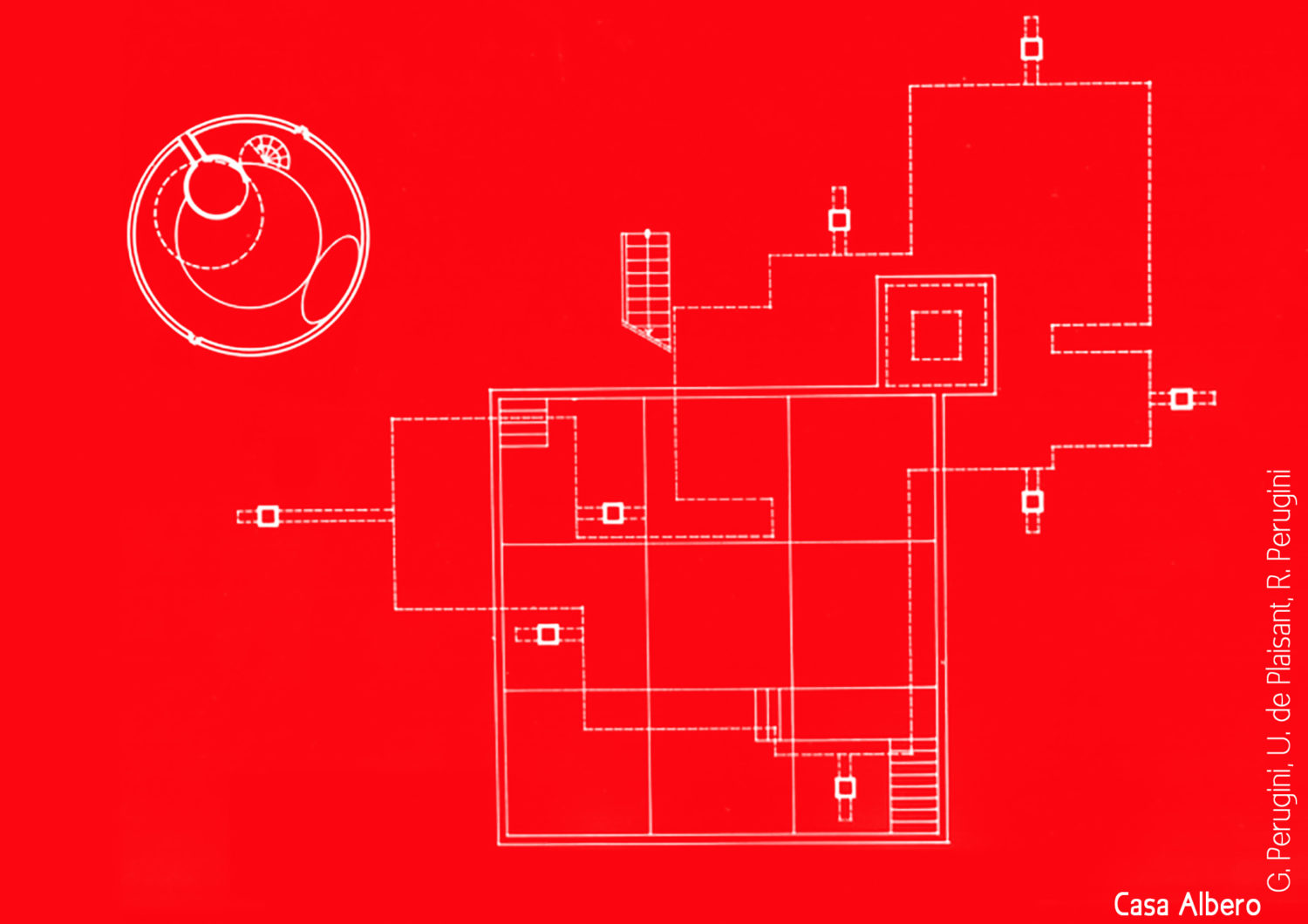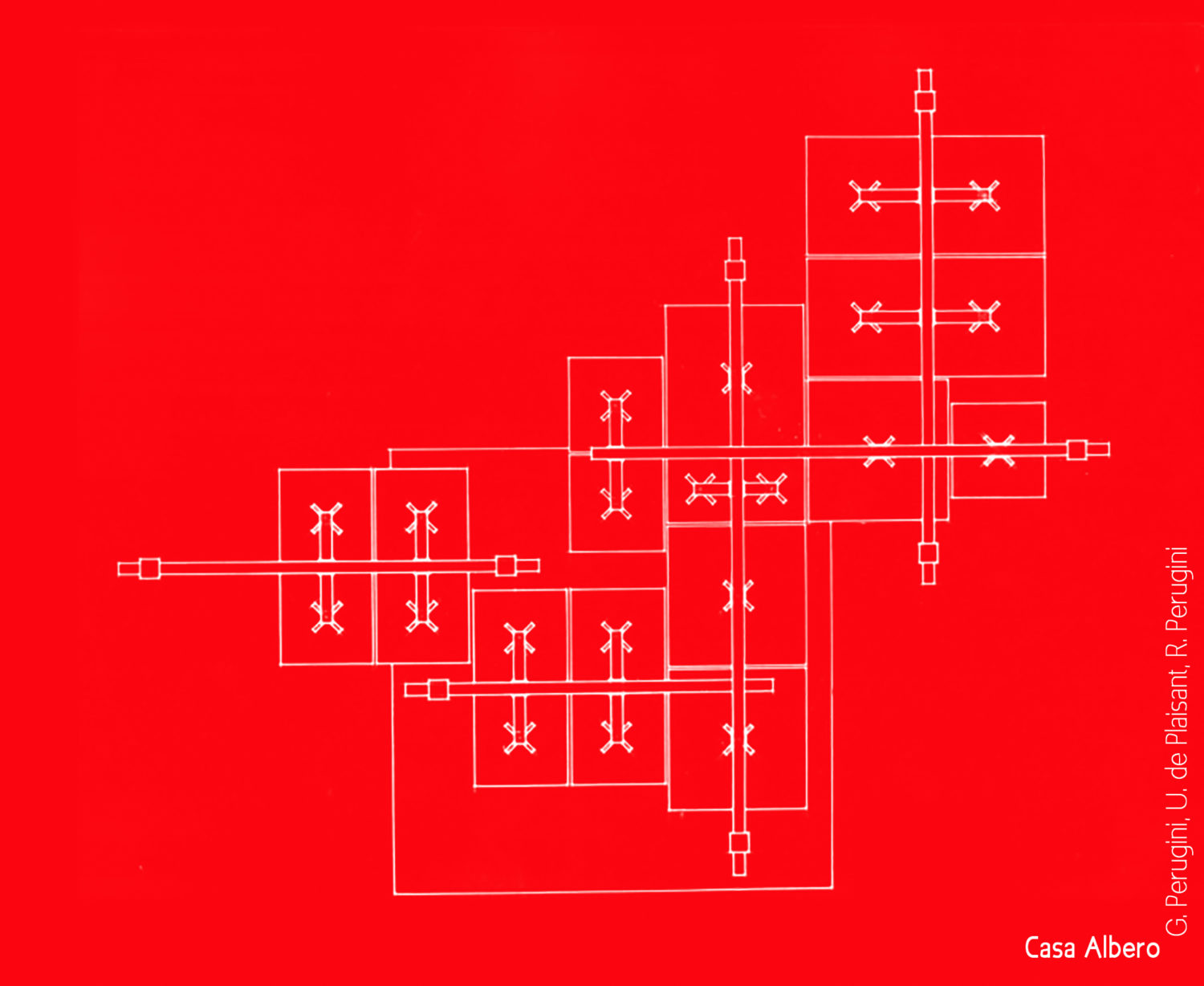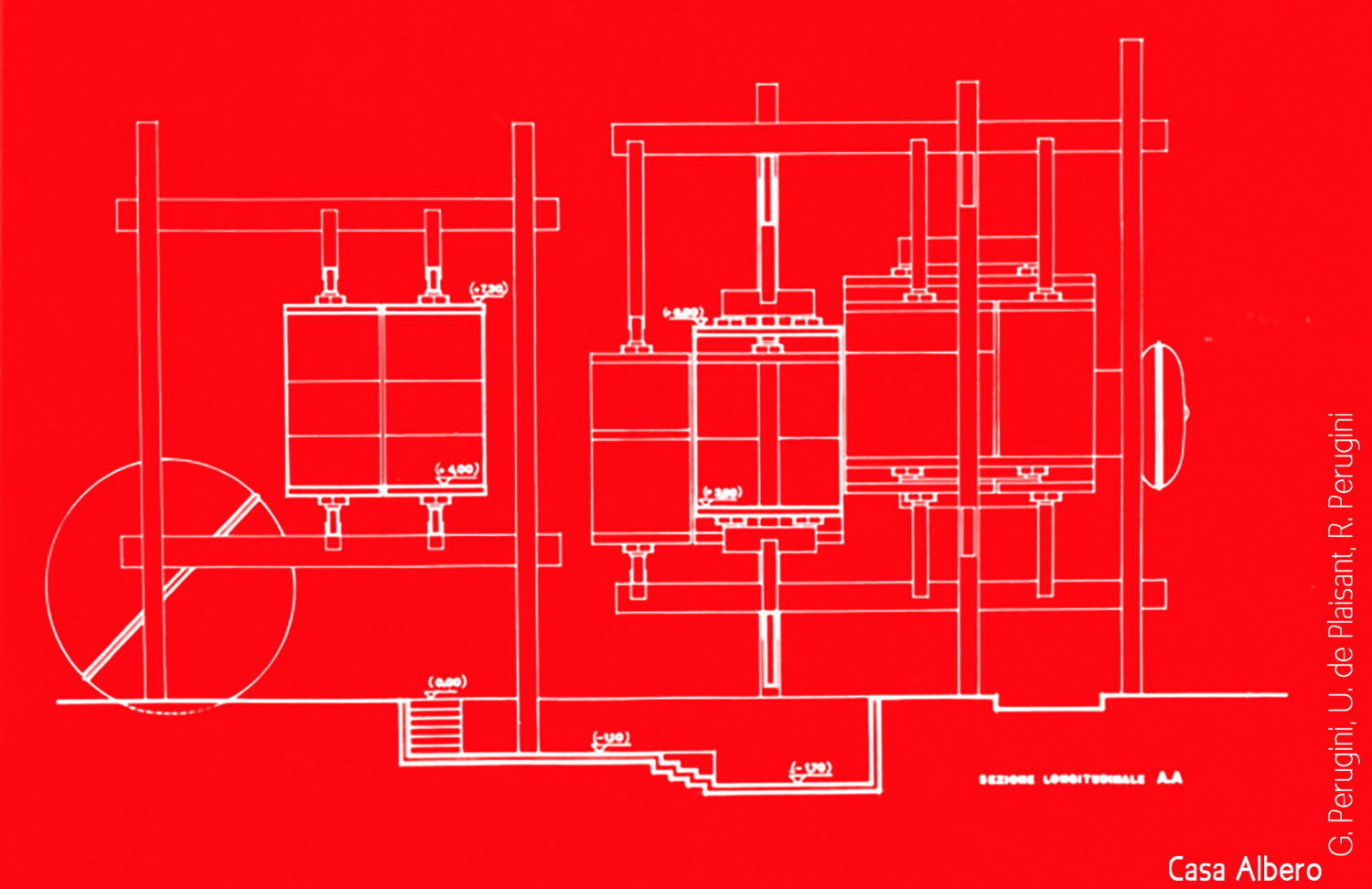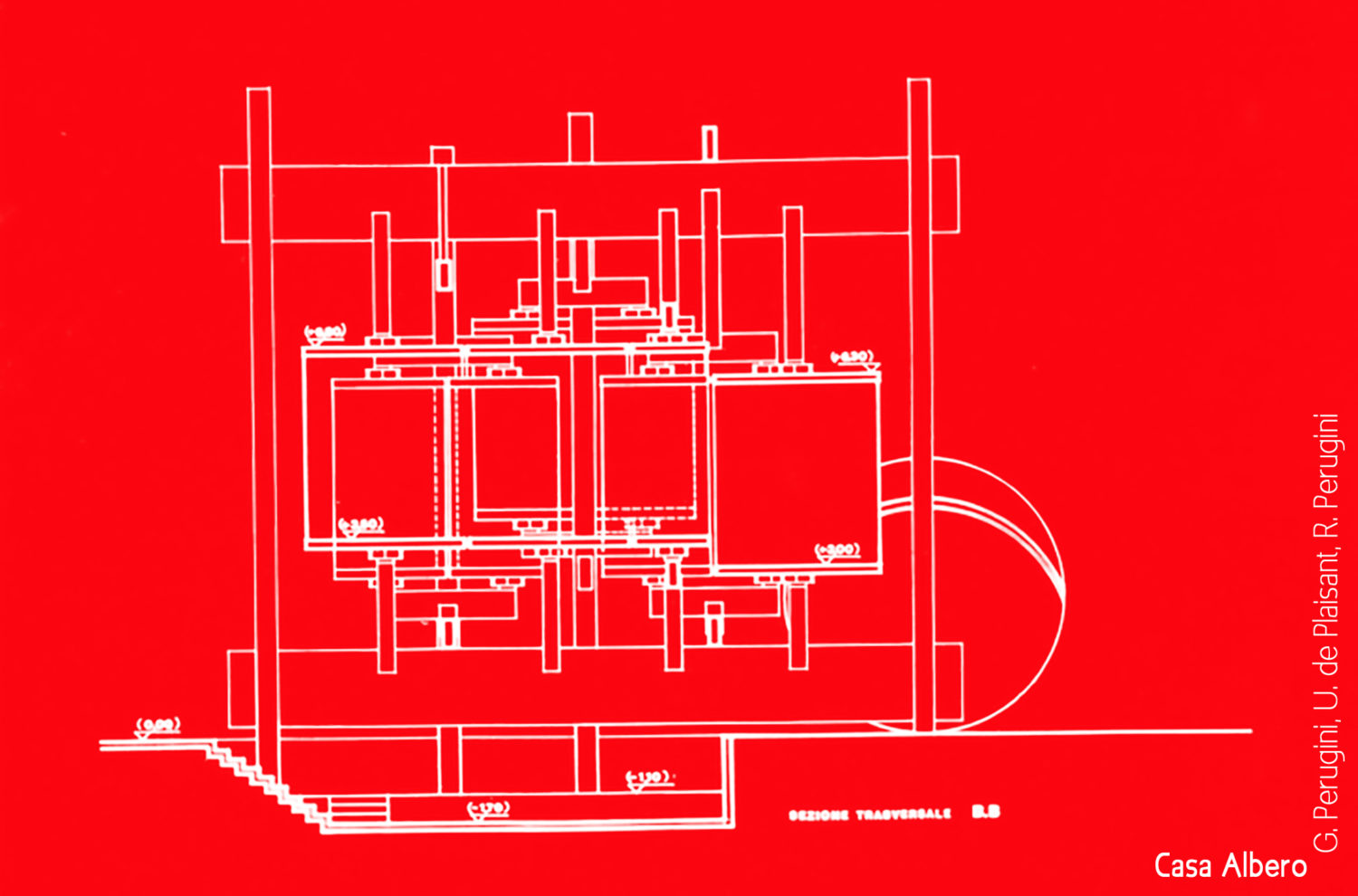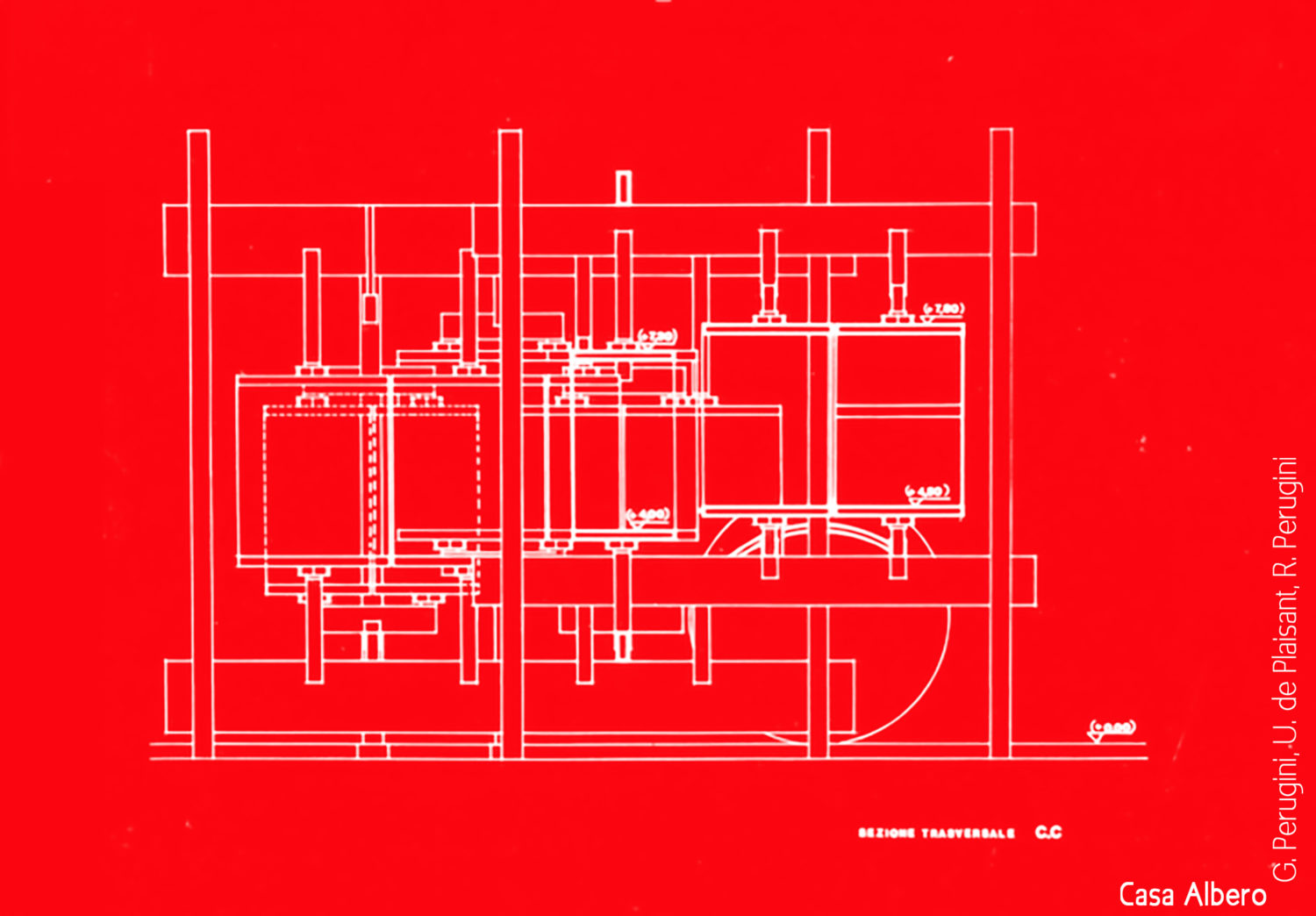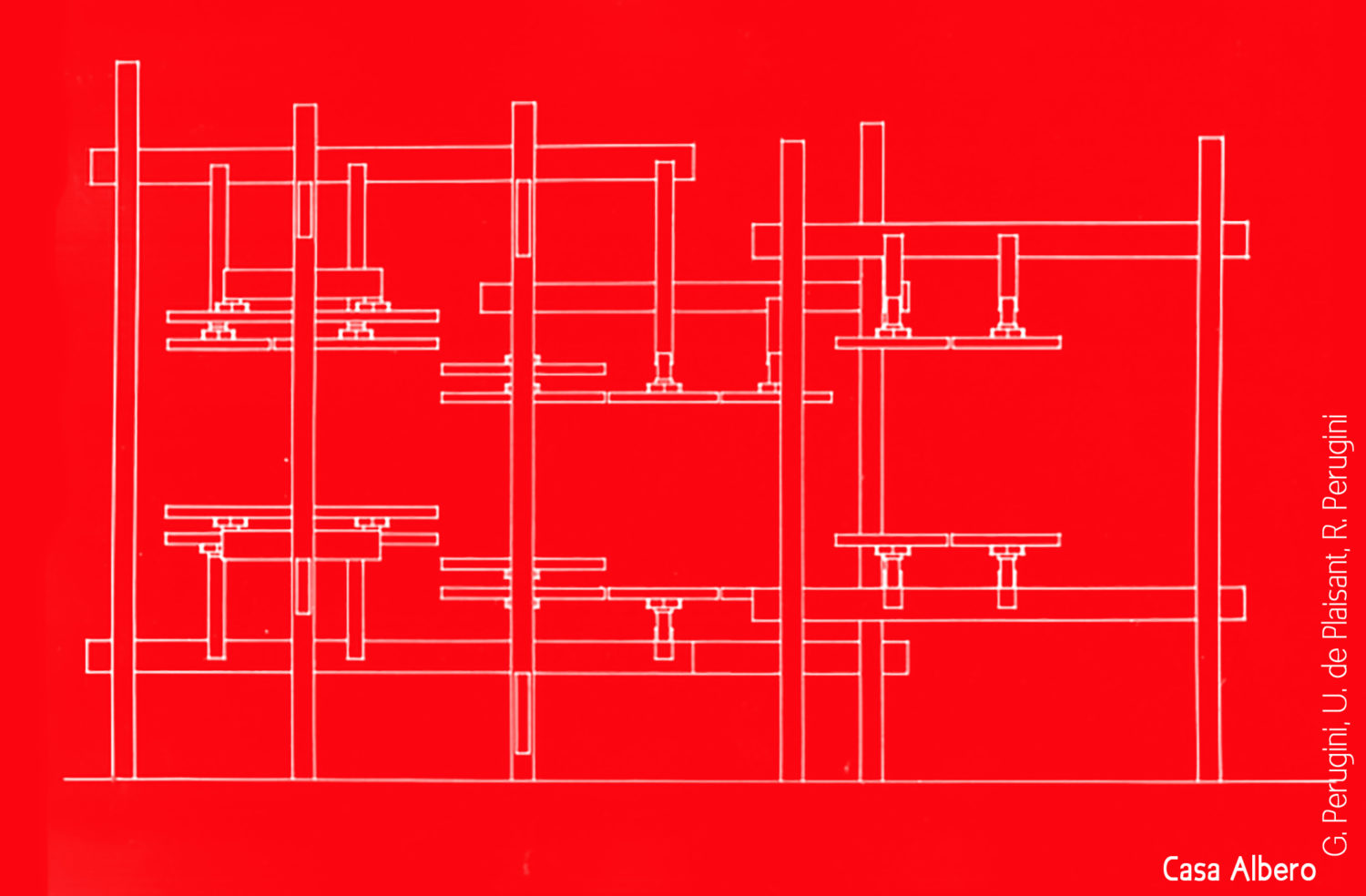Author: admin

Catalogue for the architekturgalerie am weissenhof exhibition in January – March 2019.
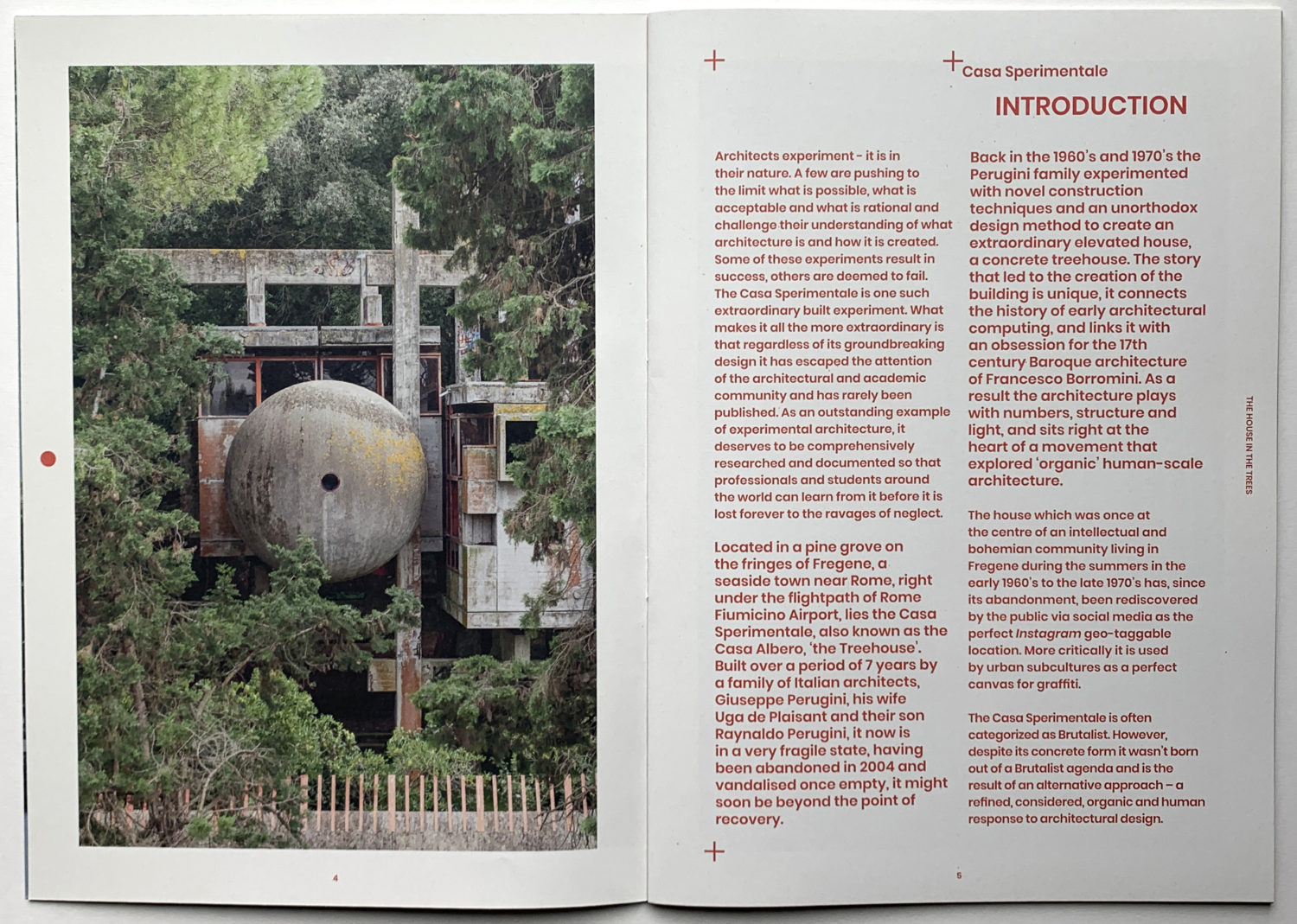
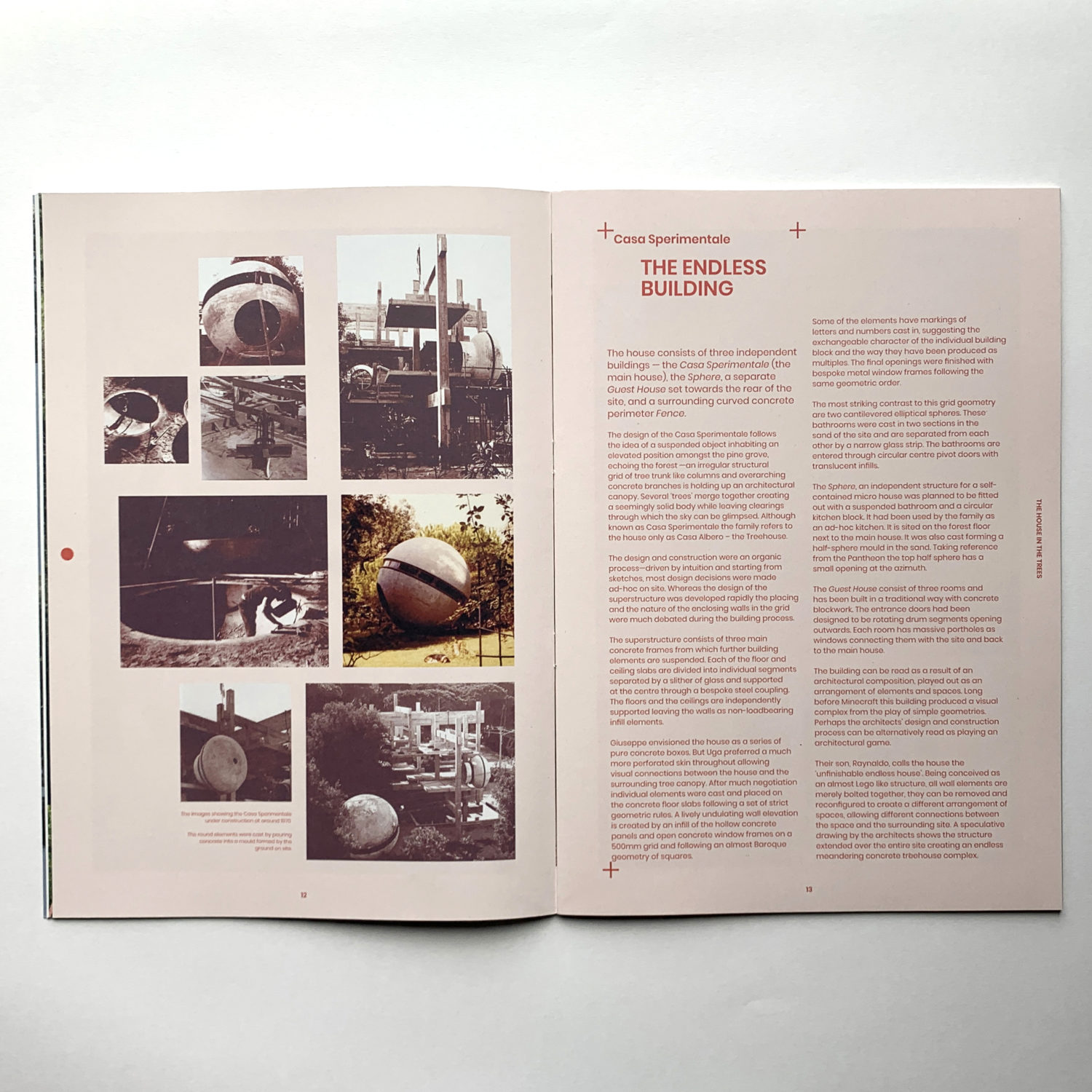

Link to architektrugalerie am weissenhof, Stuttgart
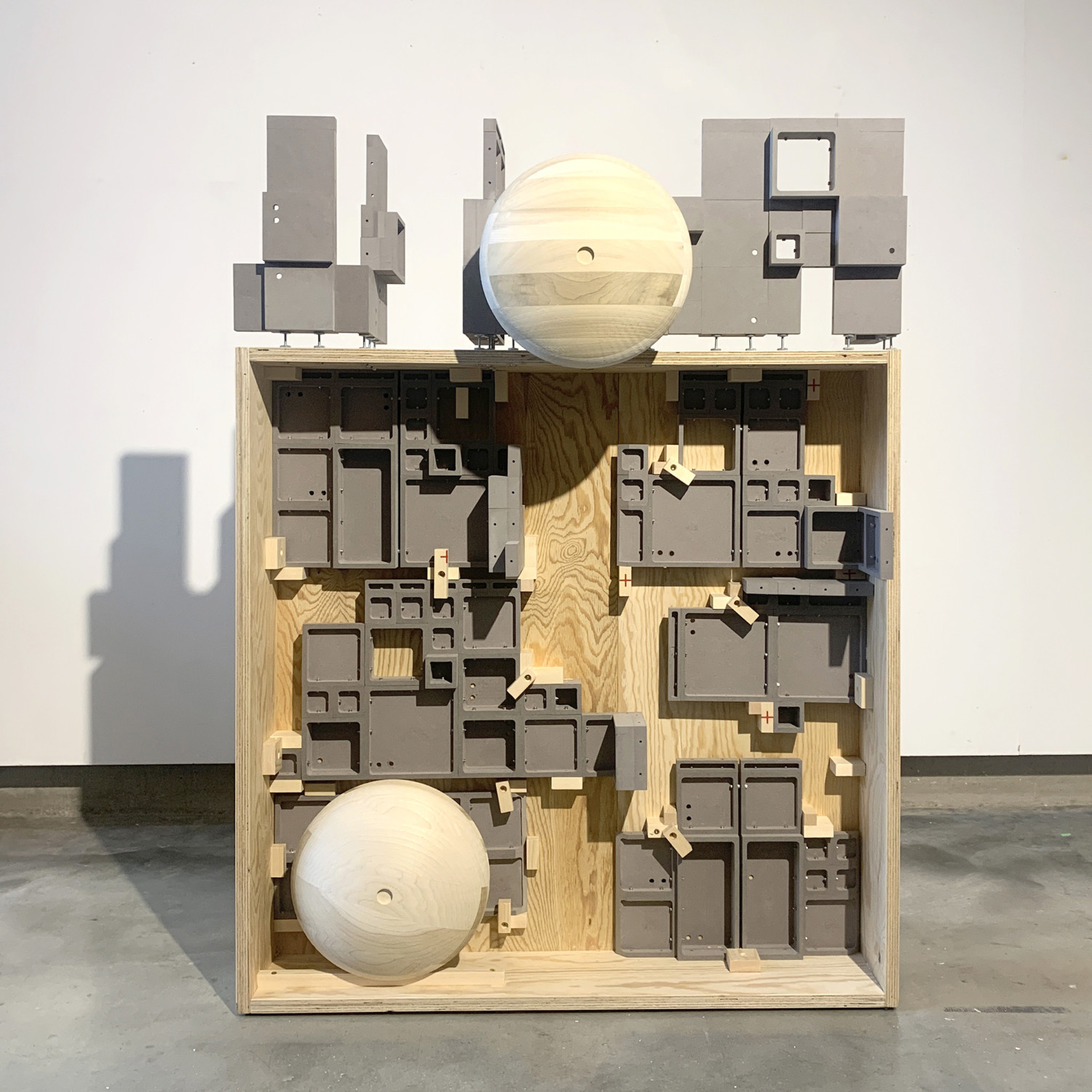
The set-up of of the walls for the Royal Academy London exhibition
To explore the idea od the Endless House we fabricated a scale model of the Casa Sperimentale. THis model made of grey Valchromat and wood was set up for the Weissenhog exhibition to reflect the current set up of the walls in the house.
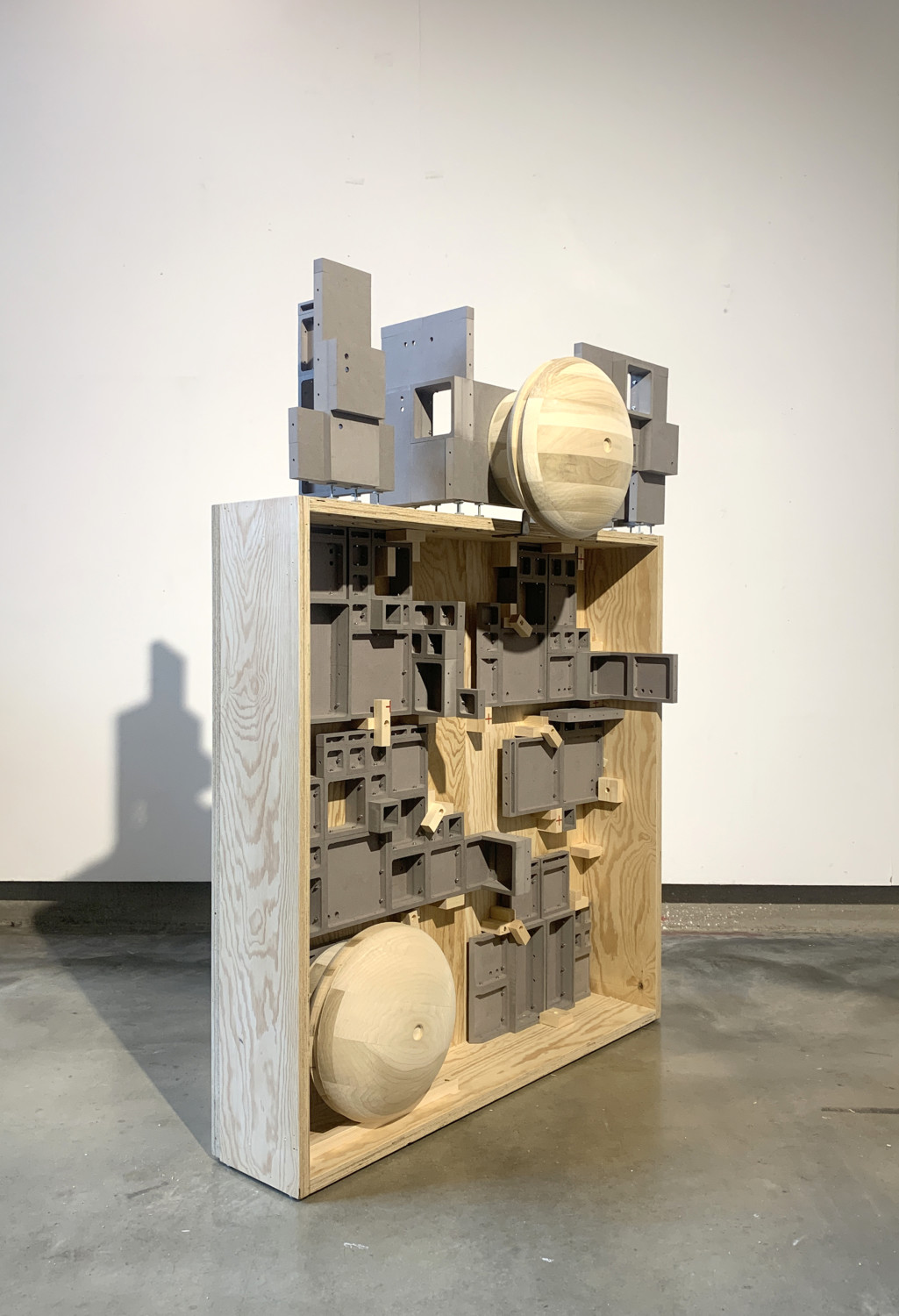
The model, consisting of 199 individual pieces is, like the real building, made of modules bolted together. They can be disassembled and reassembled to test out different configurations of the building.

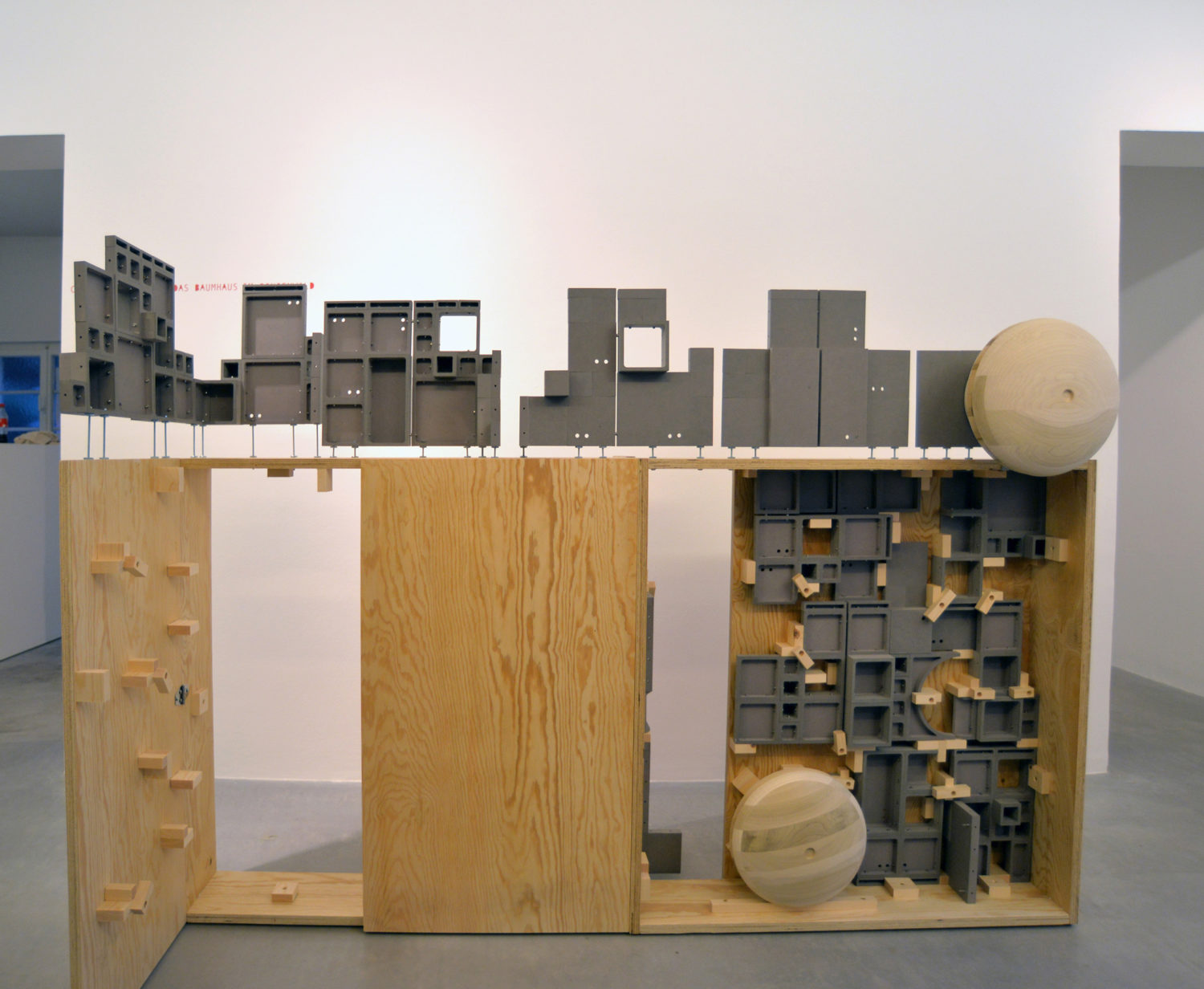
Casa Model set up in the Weissenhof exhibition.
This setting reflects the current set up of the walls in the Casa Sperimentale. The transport box, made of plywood in the same dimensions as the Casa Sperimentale wall elements can be used to transport the model.
The bathroom elements, CNC’ed out of wood are suspended off the mainframe of the model like the bathrooms in the real building.


These drawings shows the CNC toolpaths for the fabrication of the model.
This model was made with support from the Bartlett BMade workshop. The CNC work was done by Dimitris Ktorides.
.
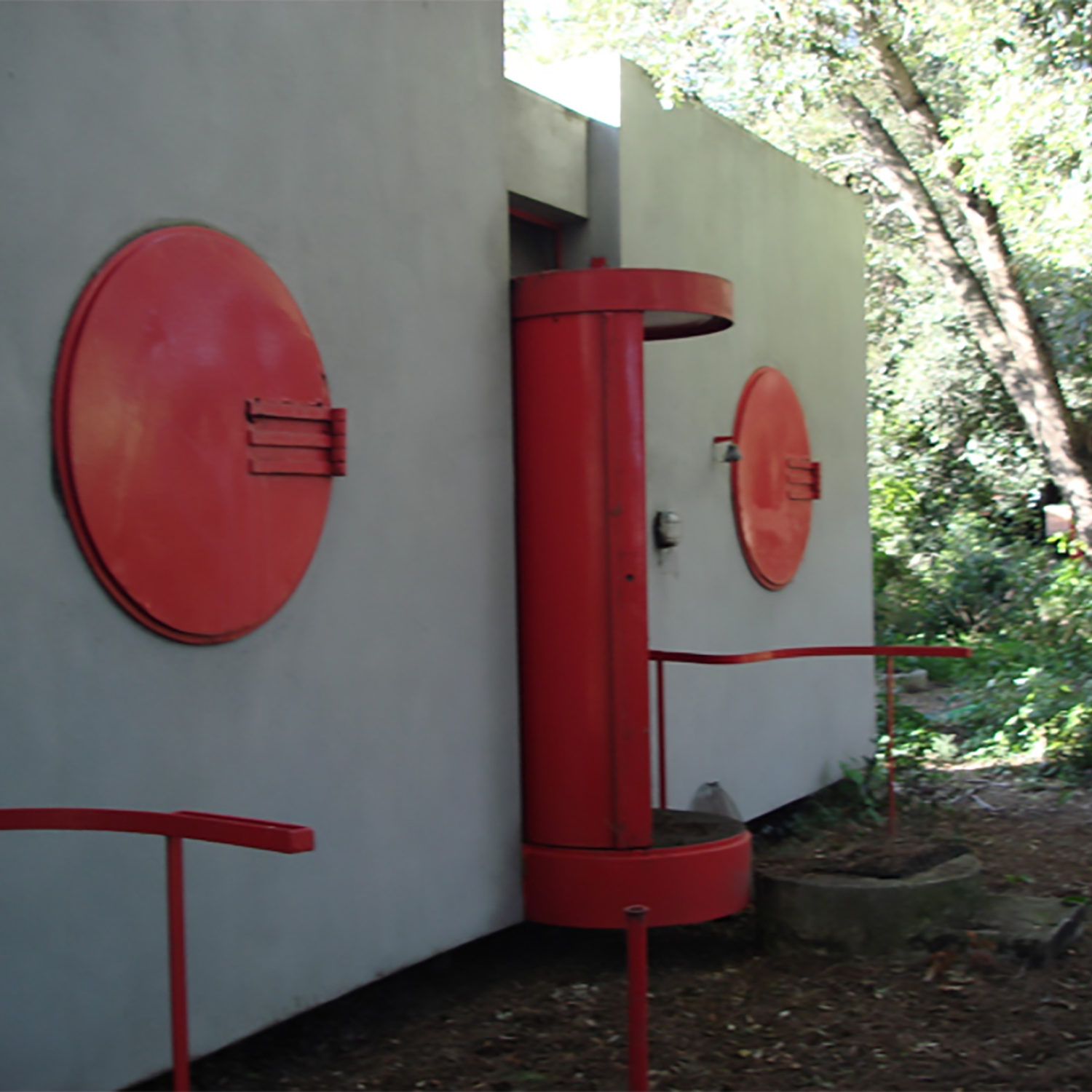
The Cabins, Cubetti set at the rear of the site are an entirly different concept of living. They are build out of traditional blockwork and rendered to fit with the rest of the ensamble of the buidlings.
The buildings consist of three cubes connected with an linking element that at the front has a tubular rotating door and at the back two separate bathrooms.
The rooms have circular windows with heavy metal hinged shutters.
The buildings had been locked for more than two decades and we were the first ones to open them up to start cataloging the interior. Inside are some of the saved furniture from the main house.

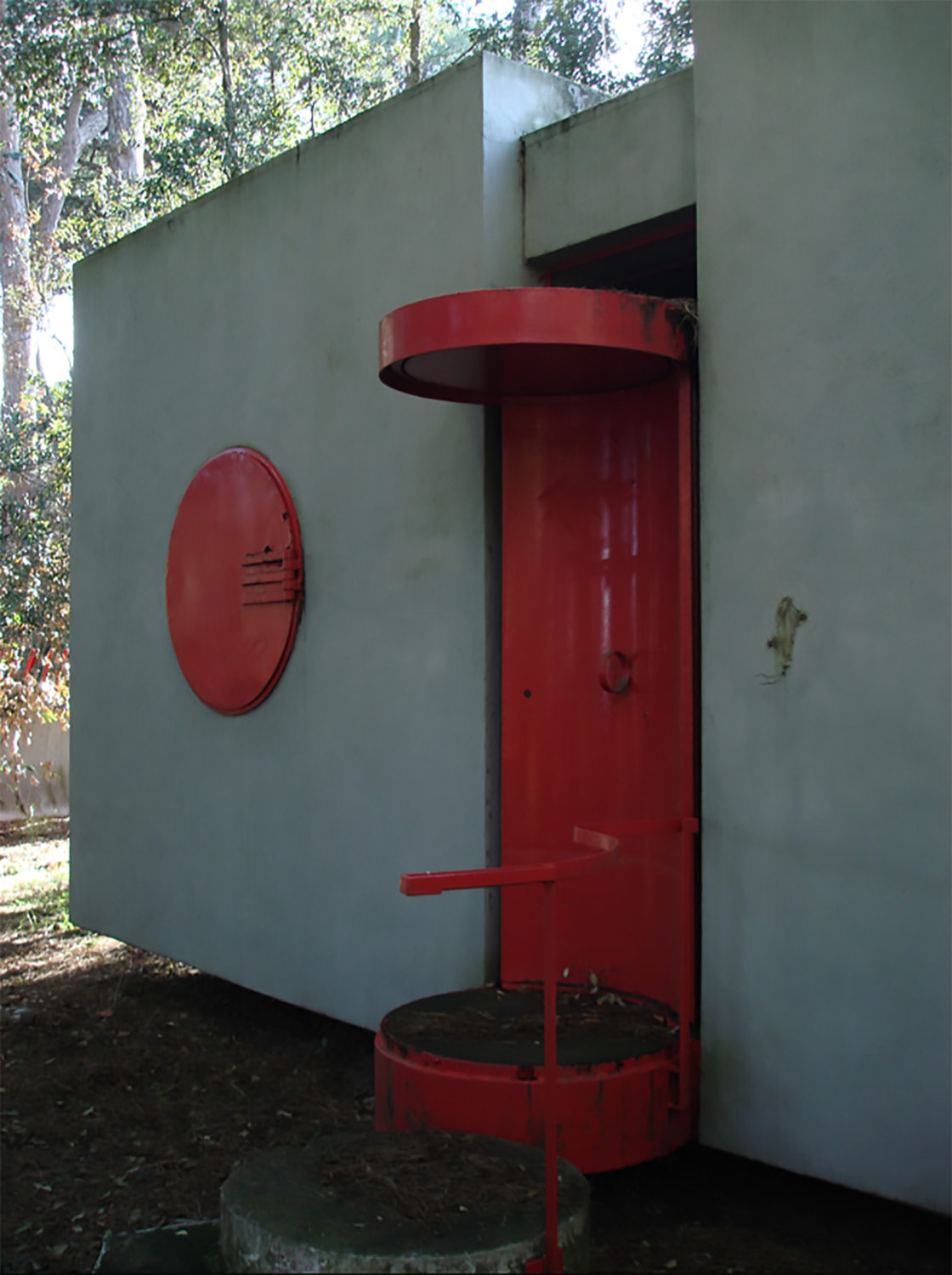
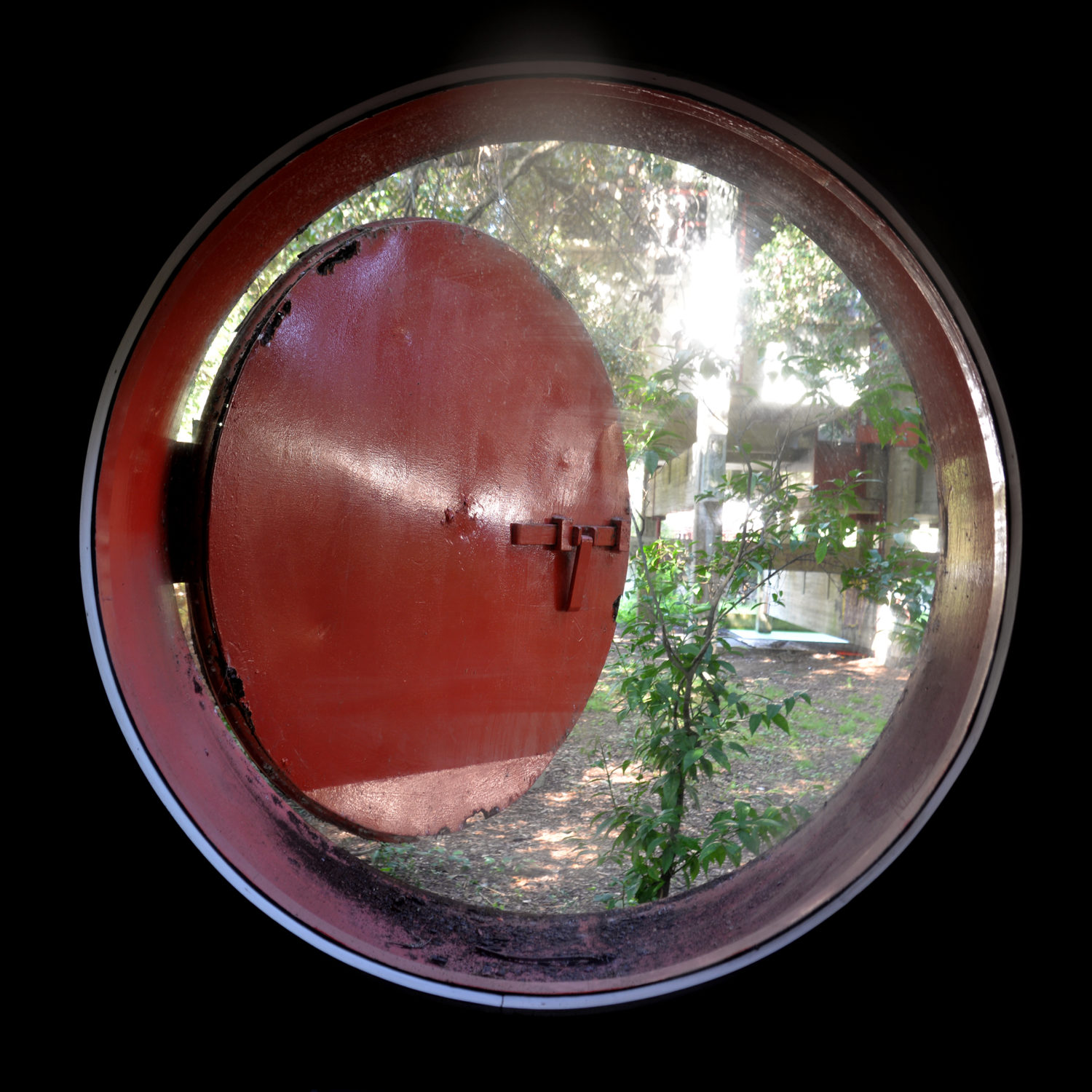
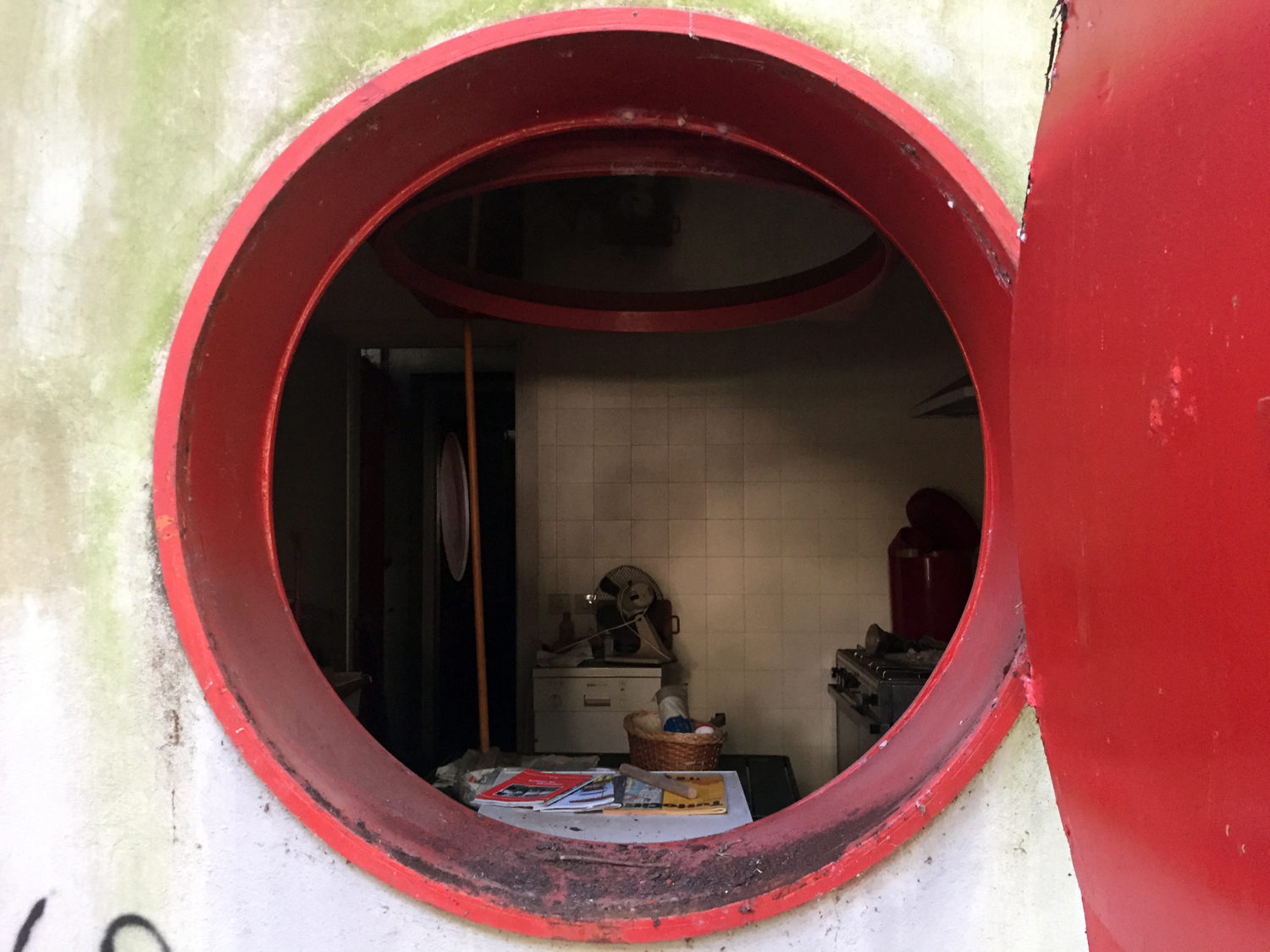
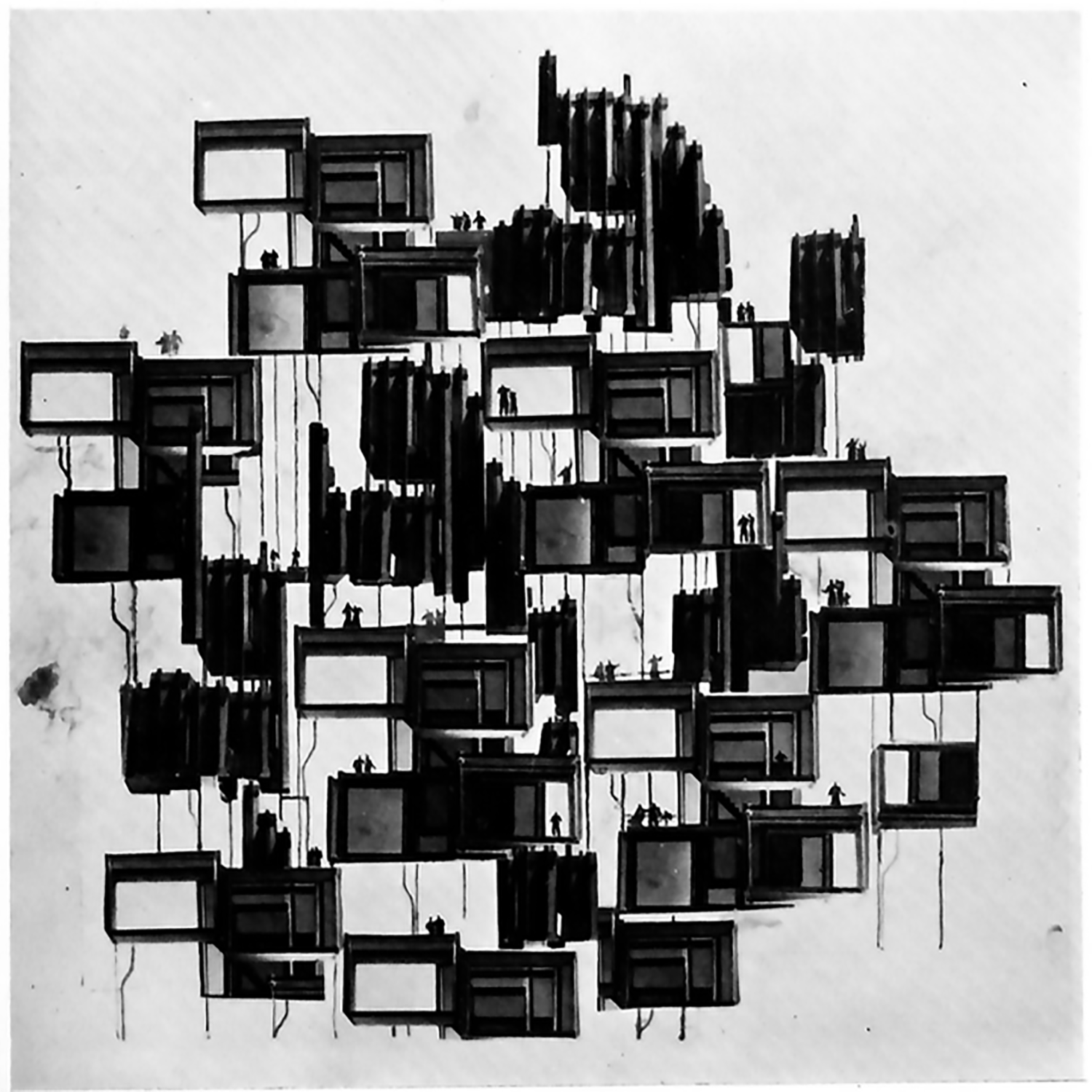
The winning entry for the Inarch Finsider Competition in 1967 can be seen as the prototype idea for the Casa Sperimentale.
Working with the ideas of a steel structure with suspended living and service elements in form of frames, Perugini envsioned the building elements to be mobile and reconfigurable. Each element is a basic frame fulfilling a basic function – an open space, a bathroom, a kitchen, a well segment etc. Each element had a thickness of 600mm with an element size of 2m, 4m, 3m and 4.8m. By combining different sized elements in a variety of positions and combinations it was possible to create an infinite numbder of possible inhabitatons.
Vaying the heights elements could have multiple functions—a floor, a bench, a table, etc.
Perugini was awarded the first prize for the “construction in the workshop of steel building types through the design of a living cell intended as a matrix of growing organisms”.
All elements were to be built in a workshop and delivered to site with all fixtures and fittings ready to be installed and inhabited.
The main space frame to support and hang the elements off were made of steel sections set into concrete foundations.
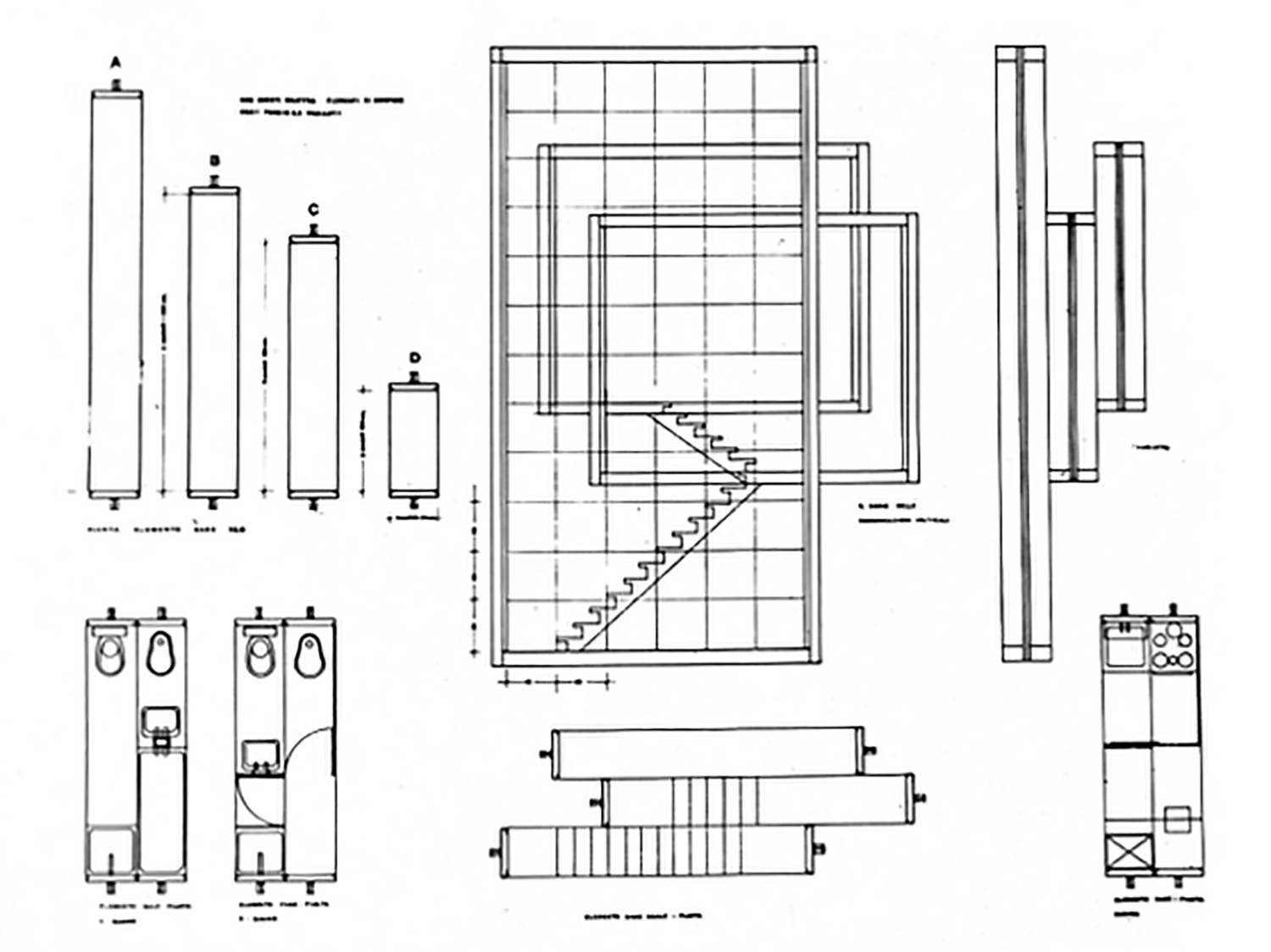
Drawing exploring the different elements and hteir possible combinations.
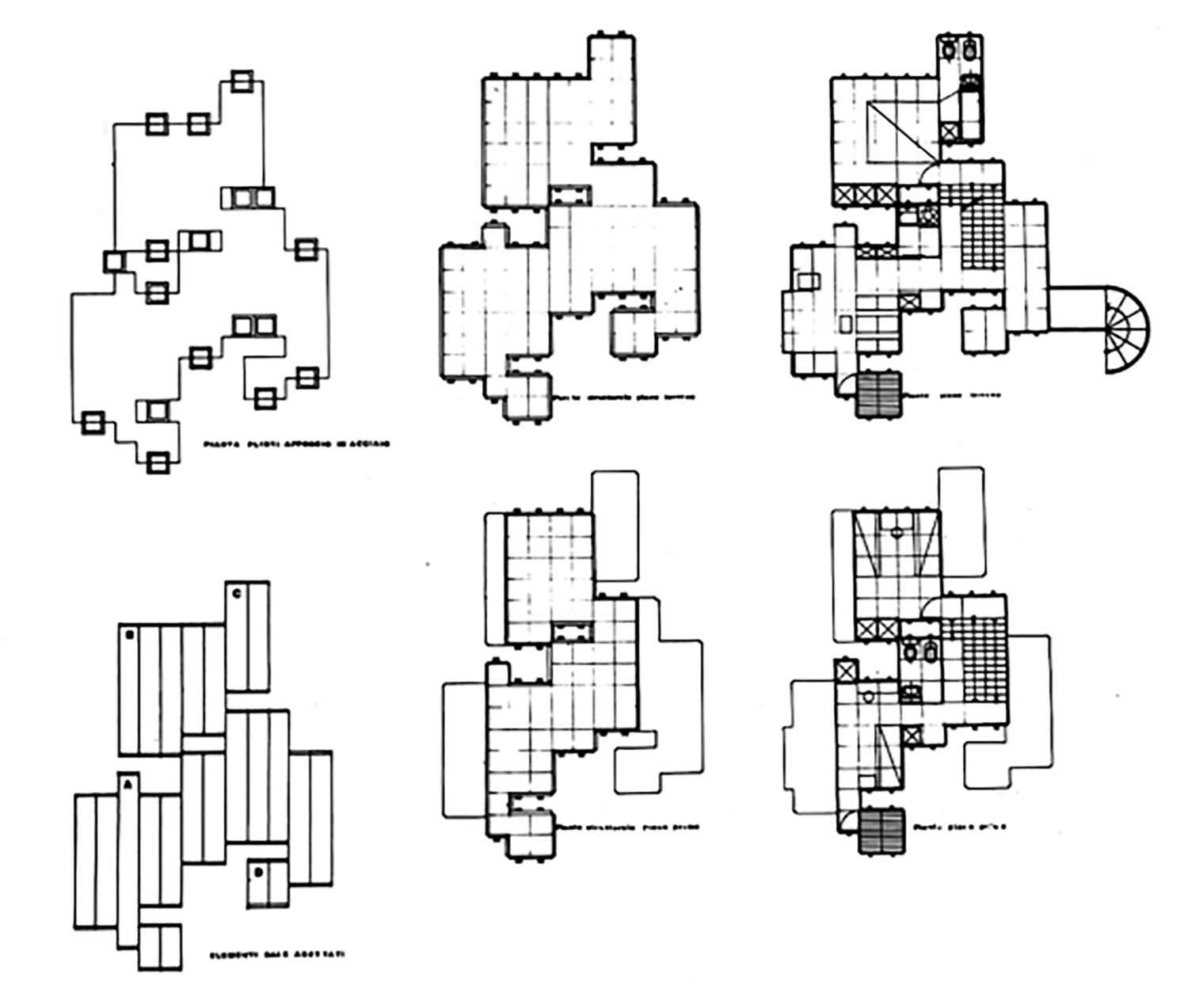
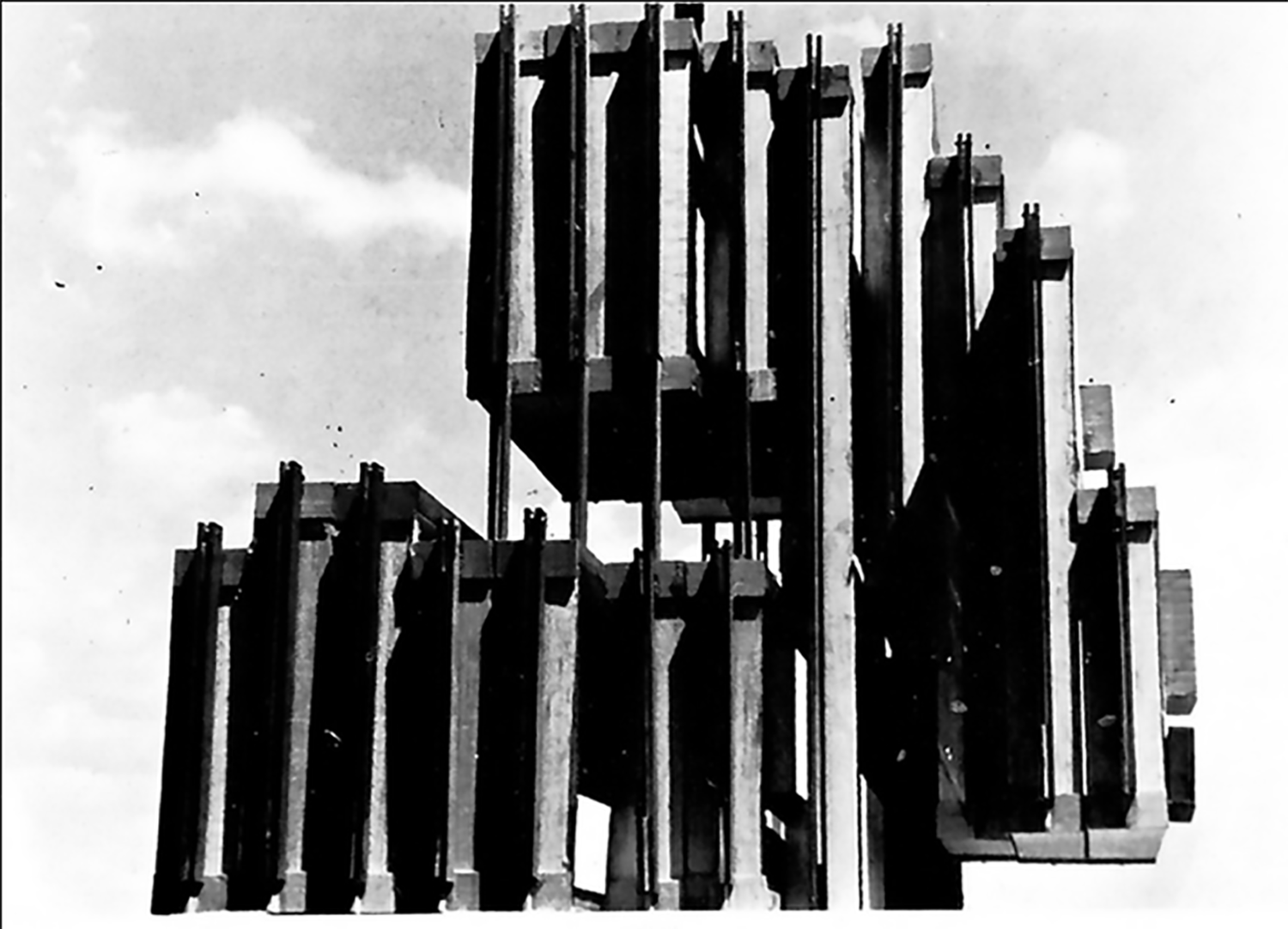
Model view of the 600mm elements bolted side by side to create hte elevation of the buidling.
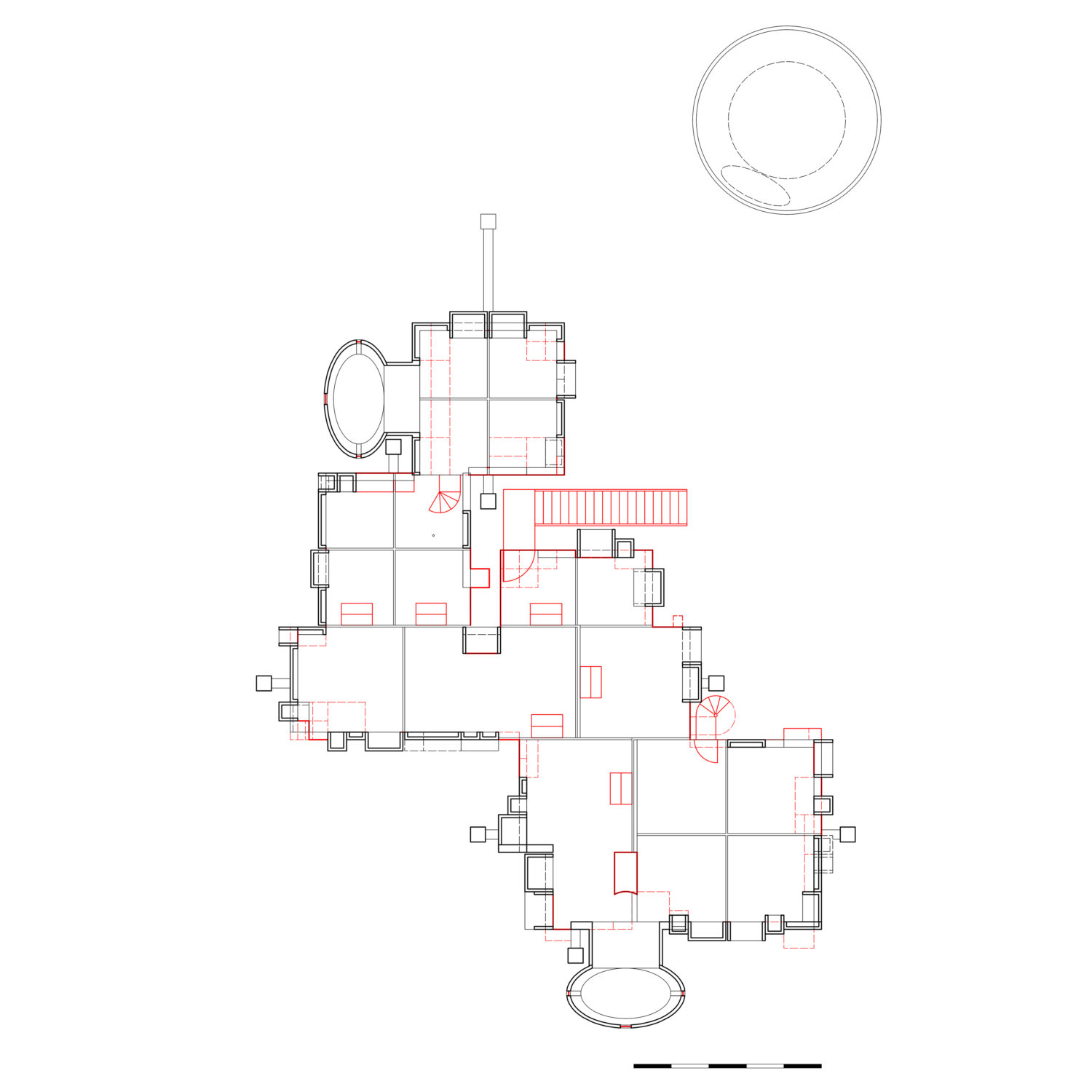
Plan of the Casa Sperimentale
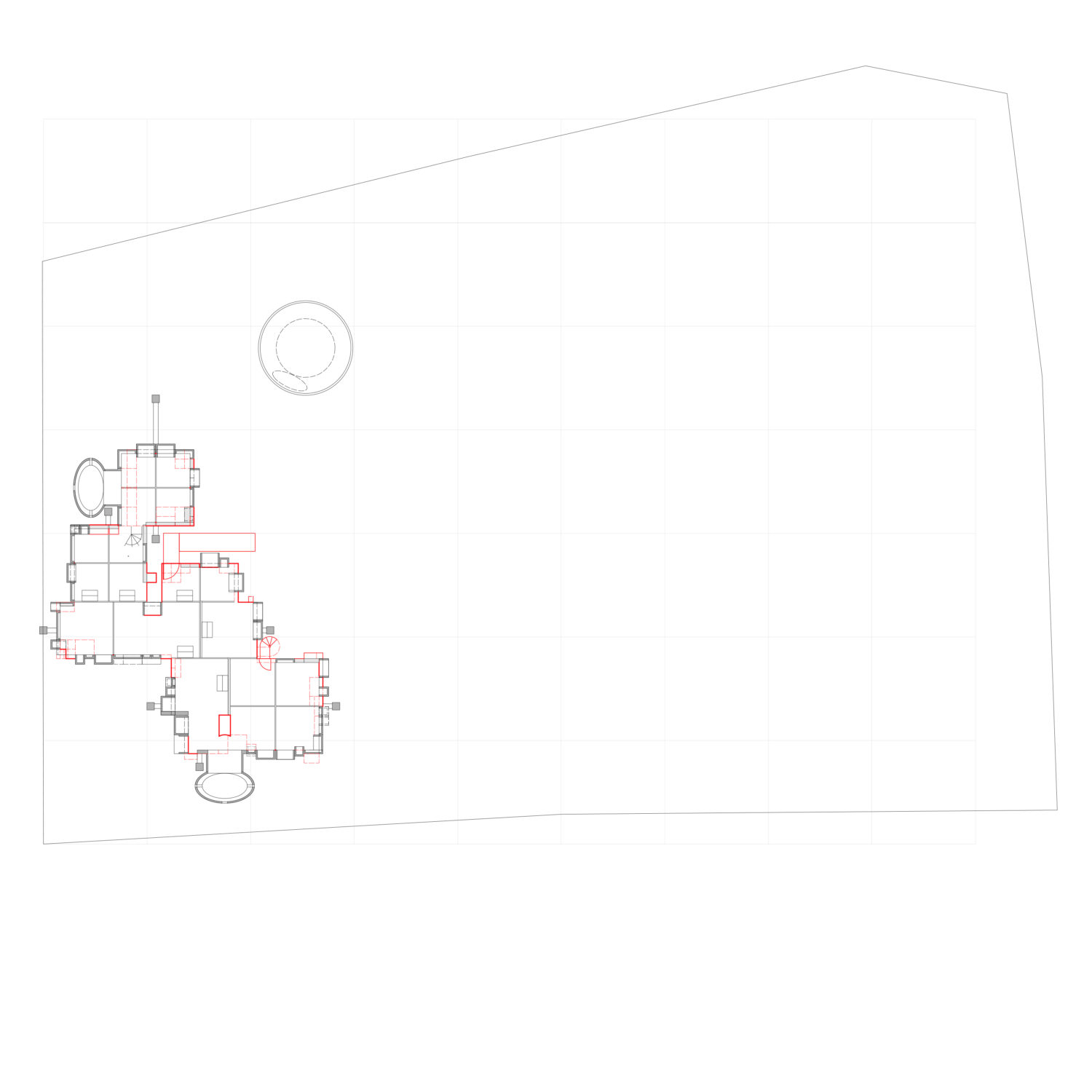
Site plan
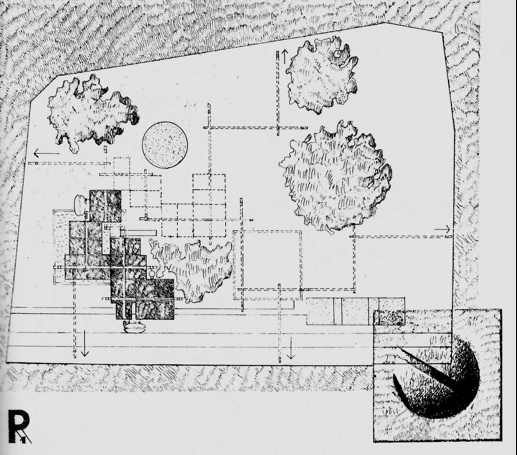
THis original site plan by Giusepe Perugini shows the Casa Sperimentale and the possible extension of the structure over the site and beyond exploring the ideas of the endless house.
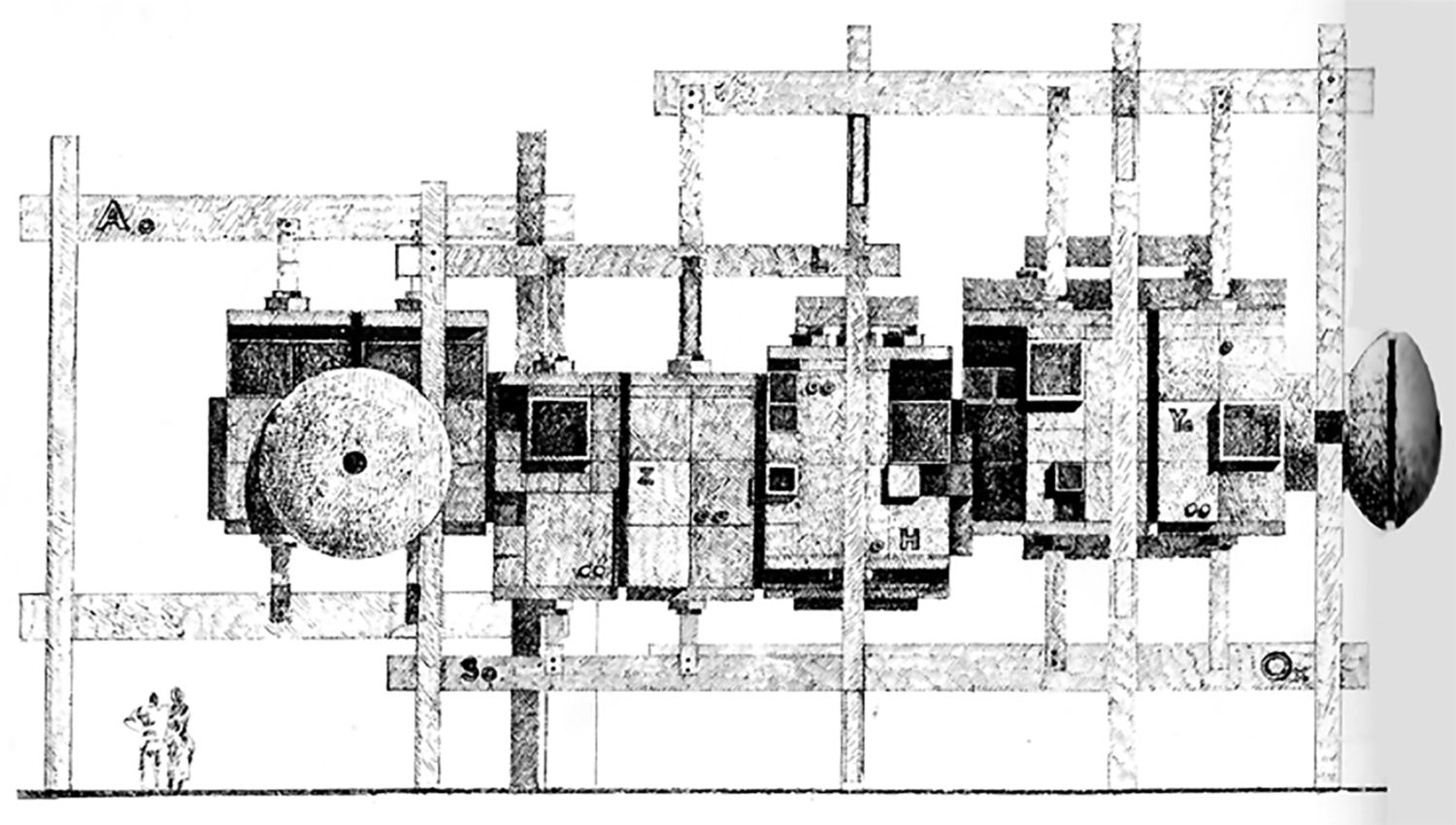
Elevation drawn after completion
Set of plans and sections through the house drawn after completion.
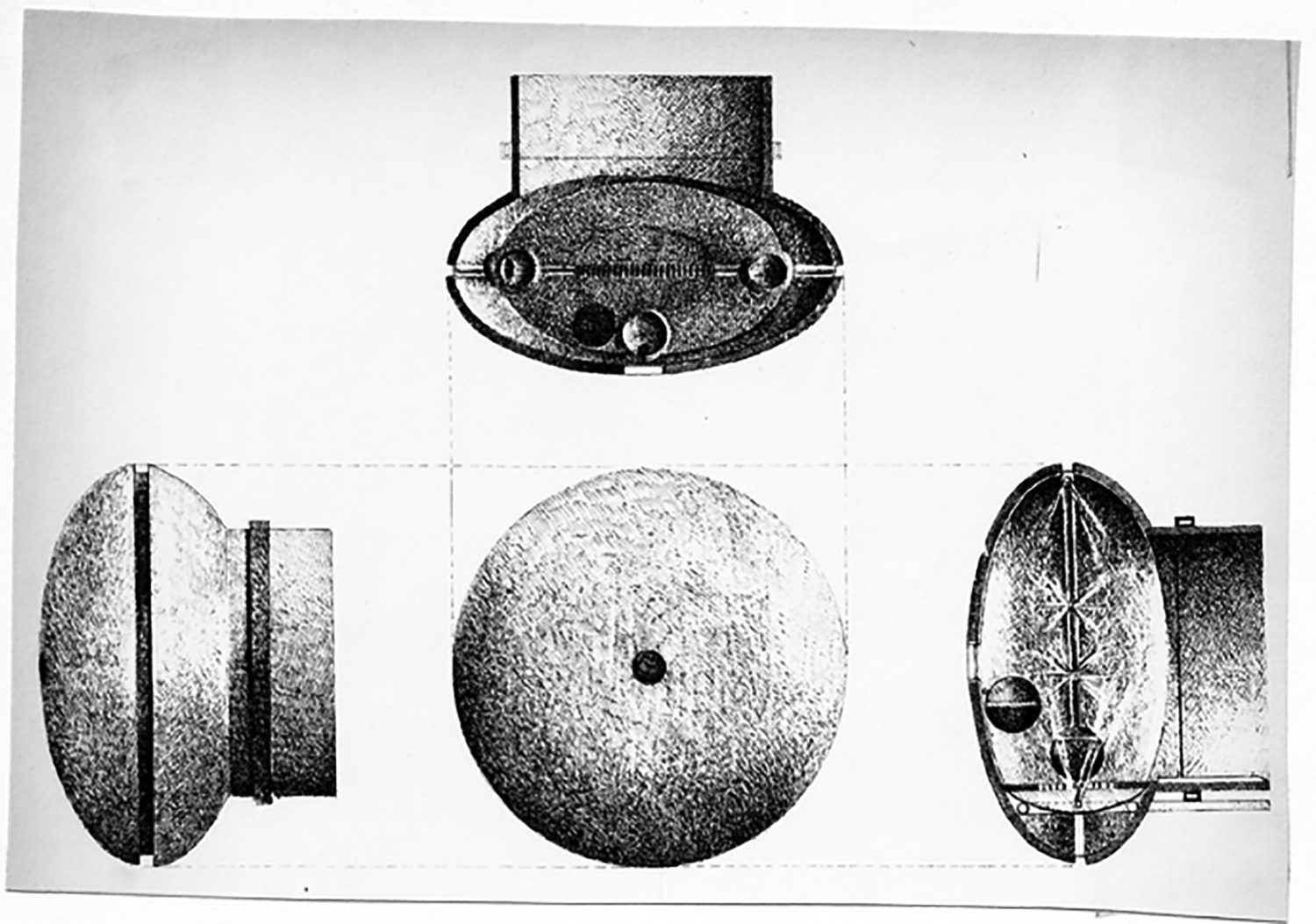
Plan, section and elevation drawing of the concrete bathroom elements
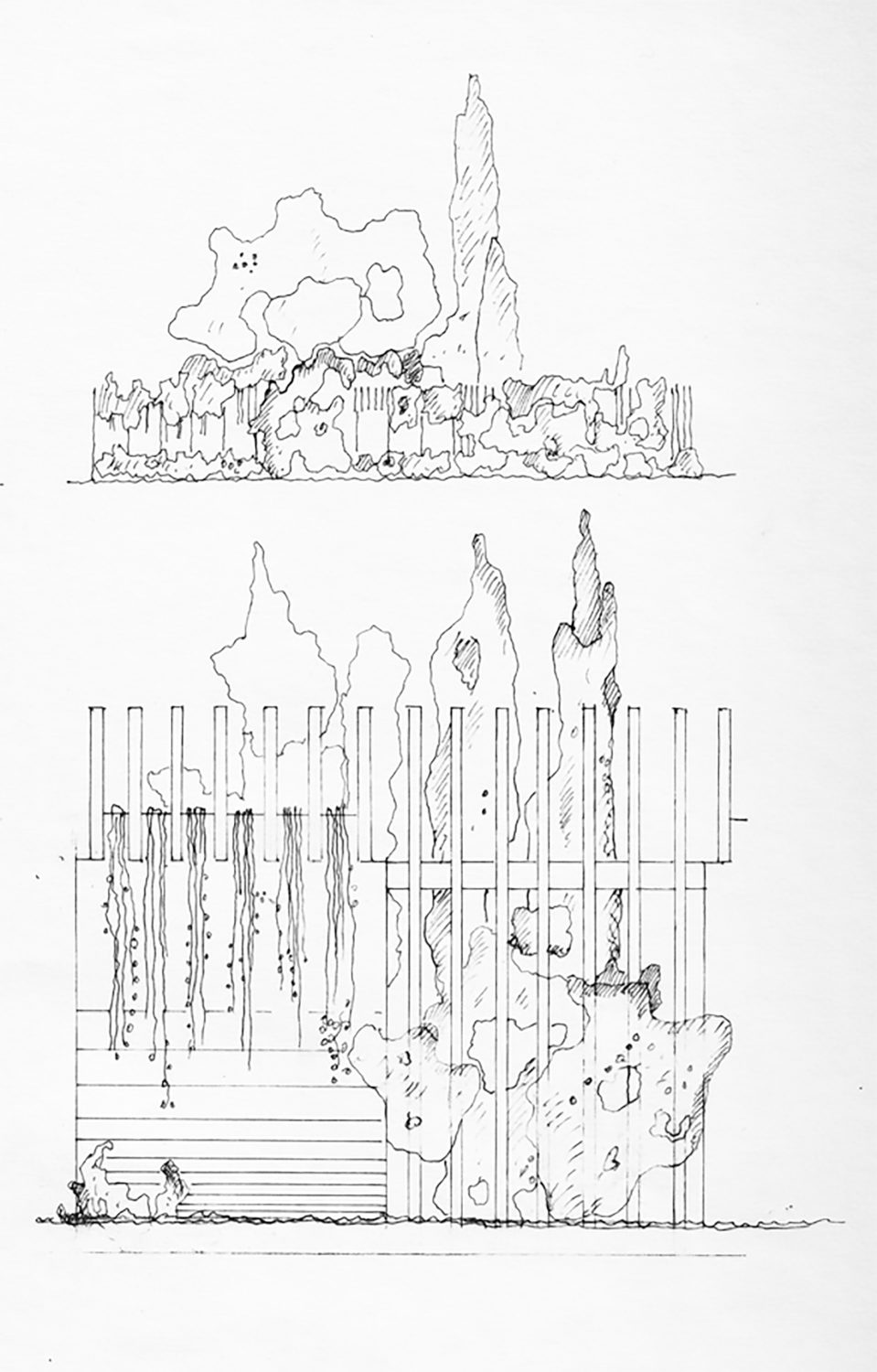
Elevation of one secment of the semi circular concrete fence surrounding the site
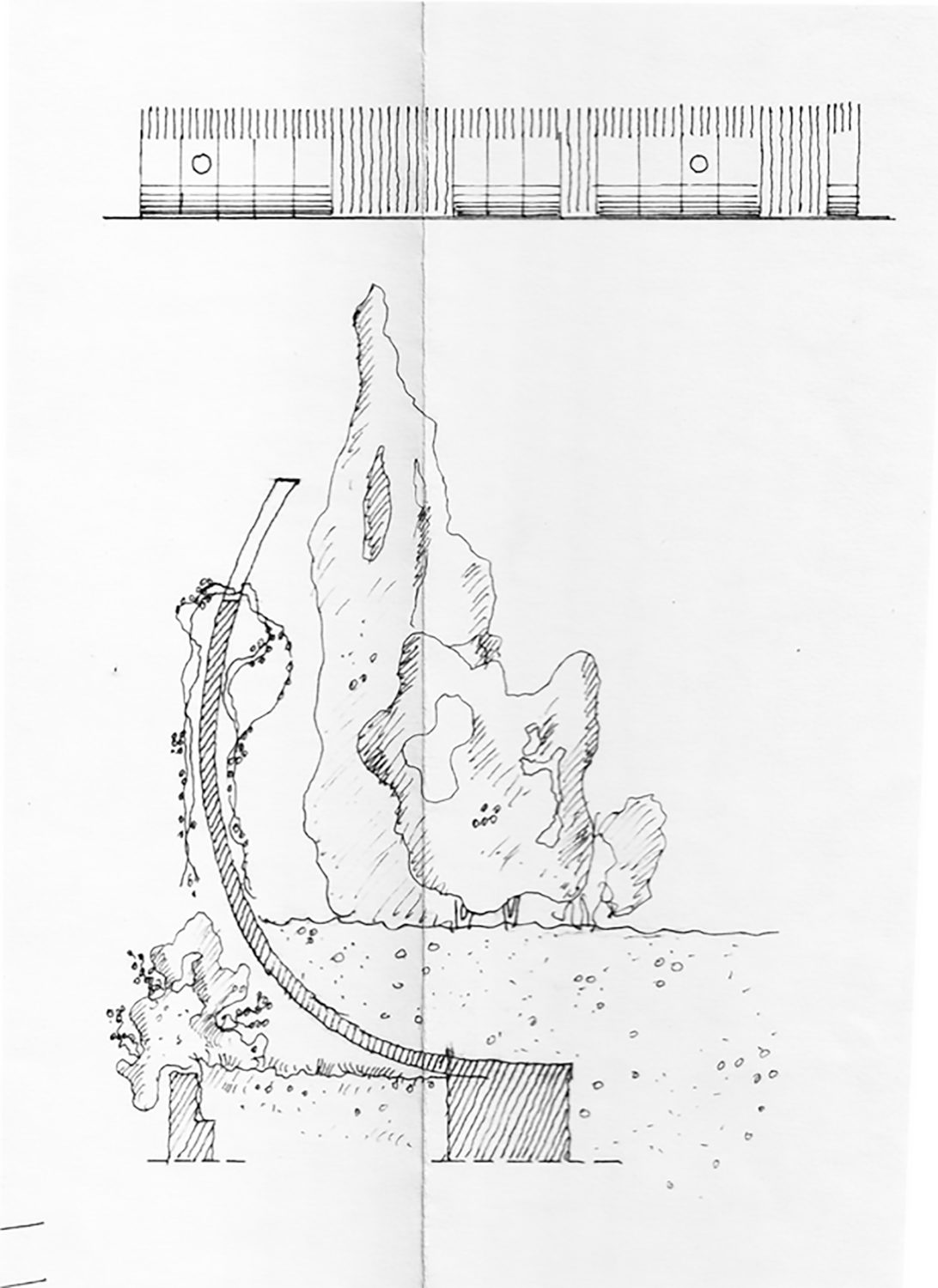
Cross section though the concrete fence. The family had the idea to raise the ground inside of the fence.
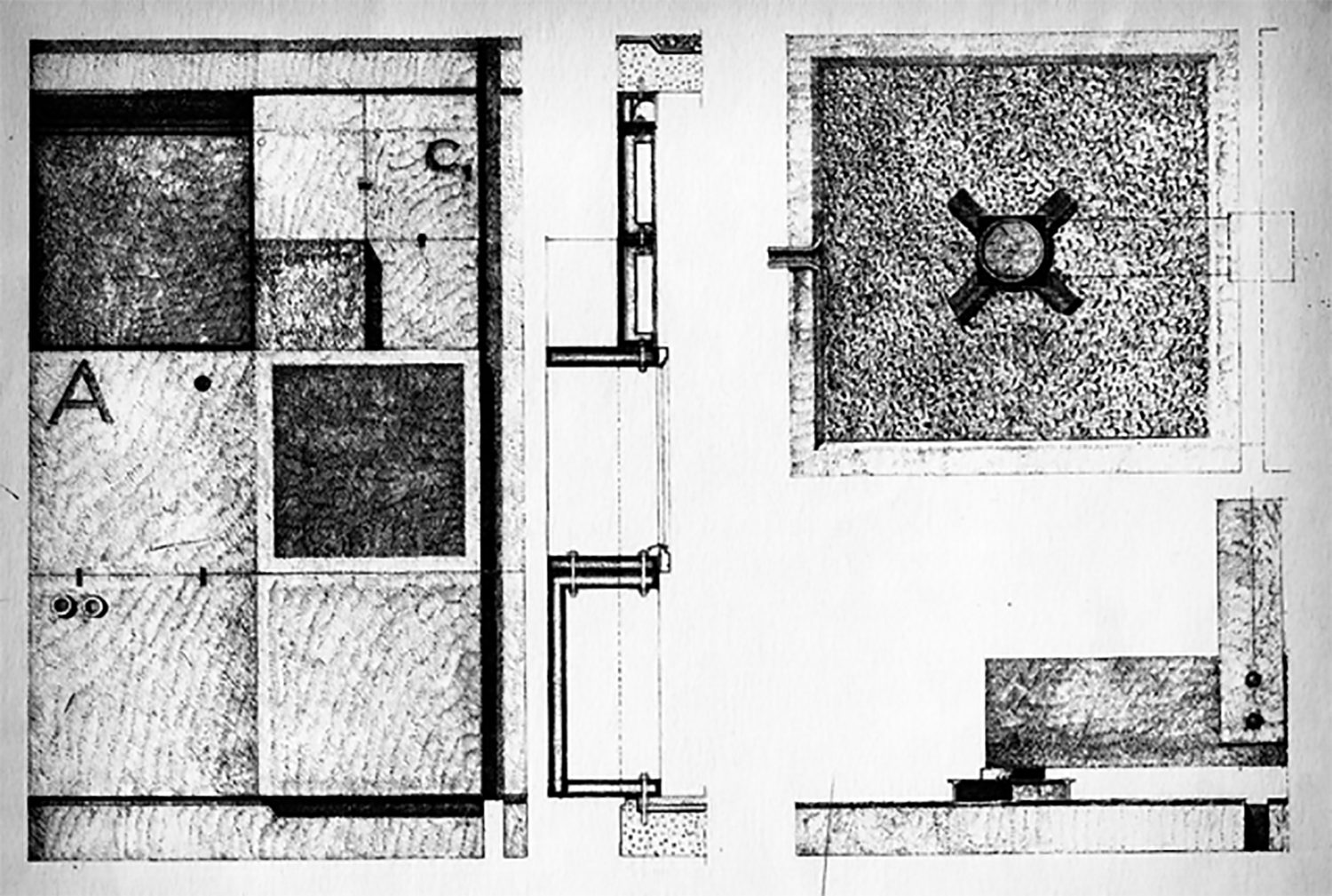
Elevations and sections through the concrete pre-cast wall elements. Each element is cast aroudn a styrofoam core to insulte the strcutre fro mthe Summer heat.

Plan drawing of the Casa with sketches added by Perugini to test ideas of how and where to place a kitchen within the finished building.
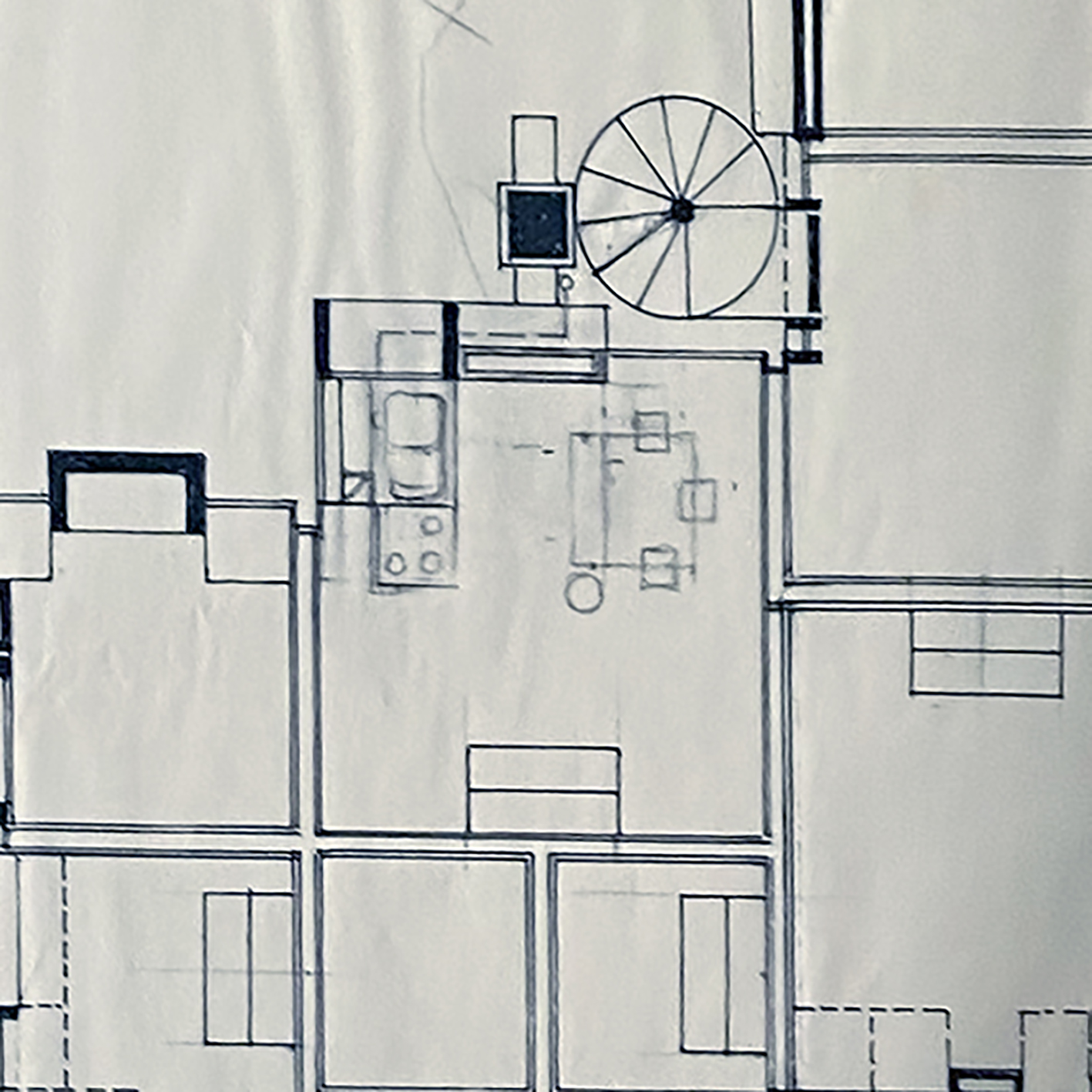
Detail of kitchen positioning in the plan

The design and building process of the Casa Sperimentale had spanned over nearly a decade. The family started building the concrete mainframe with the idea of creating a treehouse. In 1967 the Perugini’s entered the INARCH FINSIDER competition. The idea was for a prefabricated steel structure suspended of a steel mainframe.
For the Casa Sperimentale, this idea was translated into a concrete superstructure. From the moment this mainframe was realised the process of decision making became much more democratic involving the whole family. Ideas were developed in sketches during the week and then communicated in site to the builder.
All contributions of Uga and Raynaldo were sketched and discussed equally.
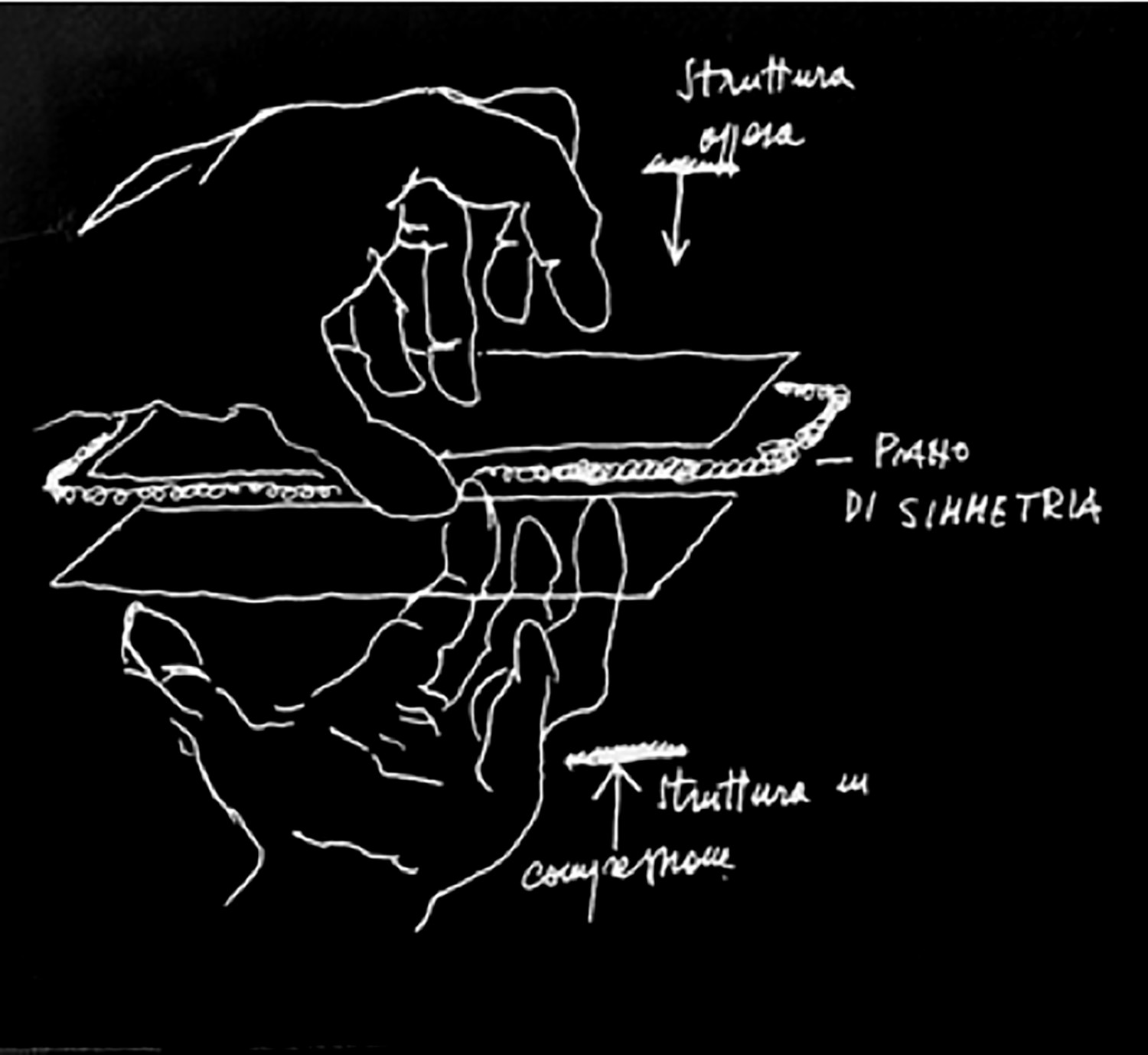
Conventional architectural principles were challenged, the floor and the ceiling treated as an independent element not structurally dependent on each other. The idea was to have a horizontal symmetry, mirroring the floor and the structure to create an open space inbetween.
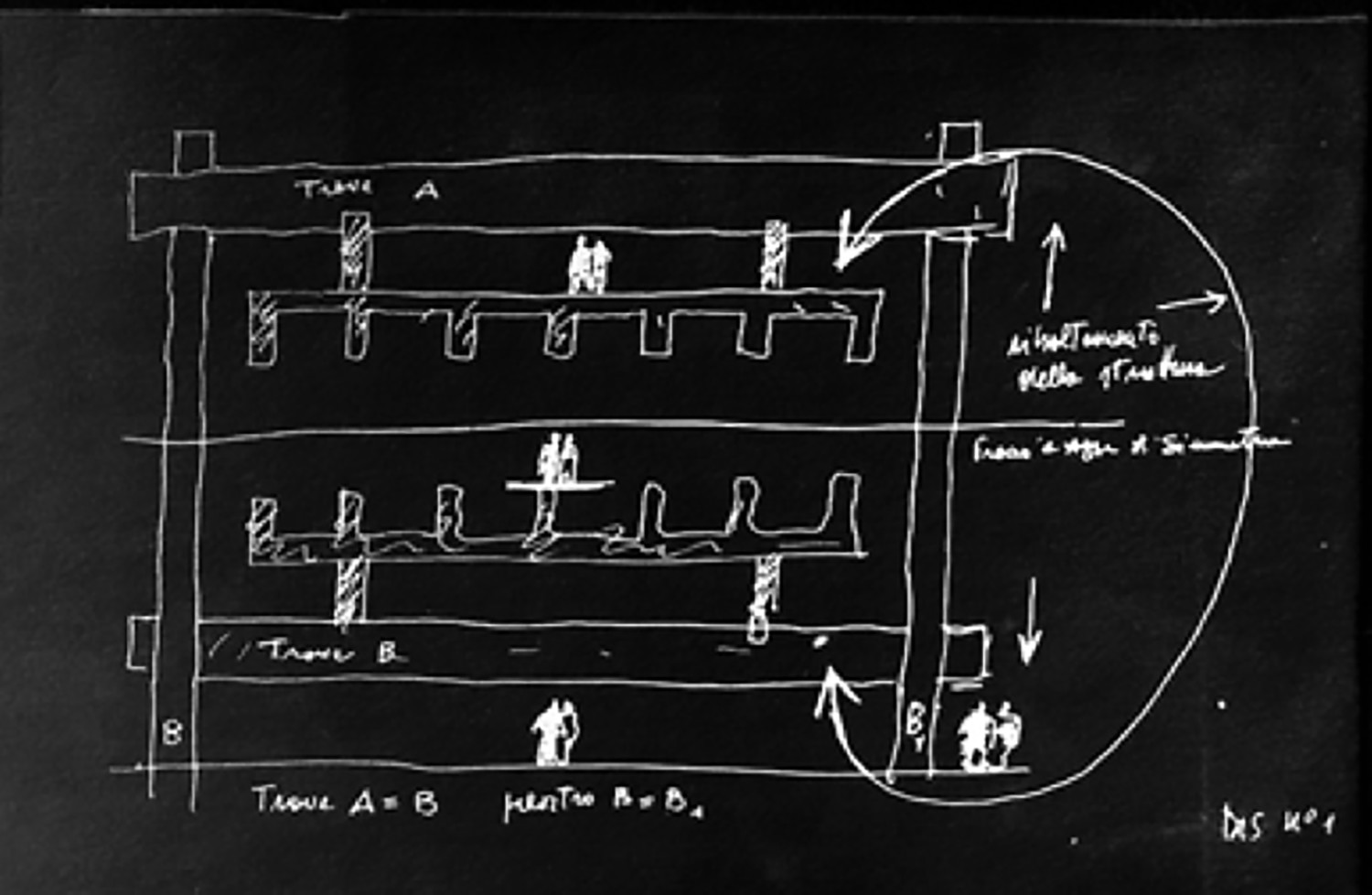
To enhance the hoizontal symmetry a pool underneath the structure mirrored again the underside of the floor creating a further visual echo.
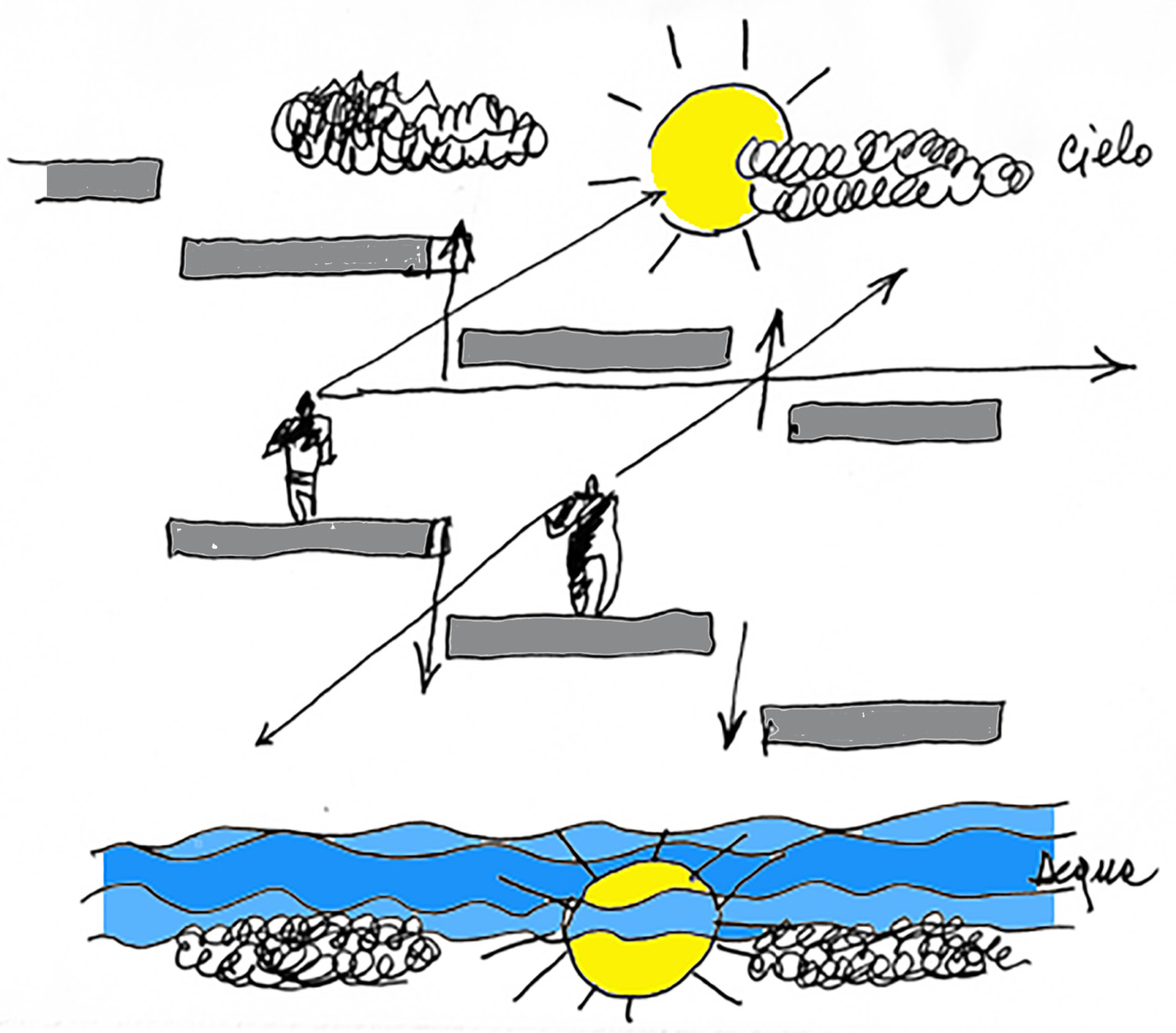
Perugini followed the Seven Principles for Arhcitecture promoted by the APAO and Bruno Zevi. To connect the occupant with the surrounding landscape and the sky above the floor elements were broken up and shiften up/down to allow a visual connection through the gaps to site below and the sky above. The pool underneath the buidling mirrored the sky again enhancing the effect by creating an upside down sky reflected in the water.
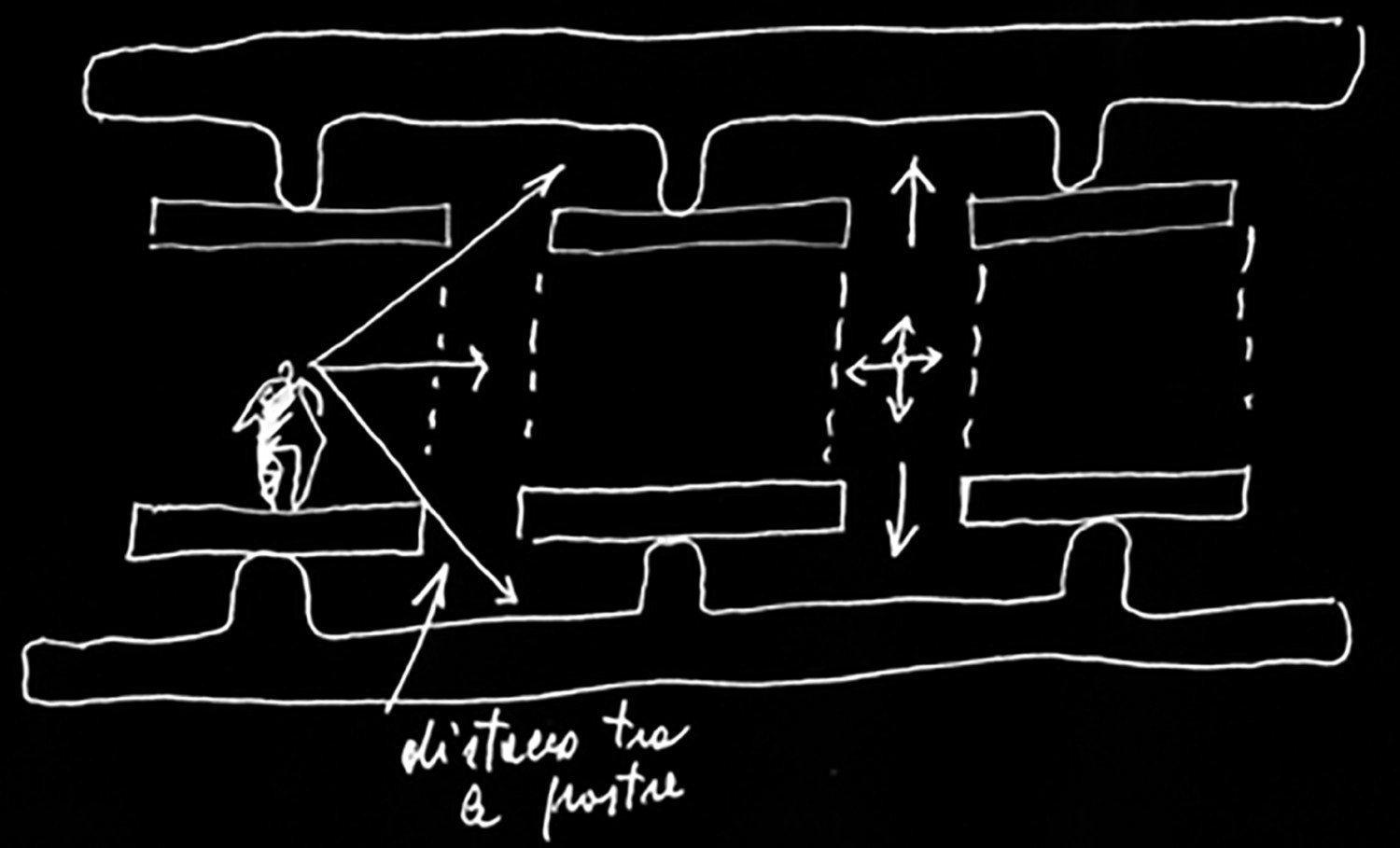
Each of the spaces occupied its own concrete floor panel, each of them independent from the adjacent element.
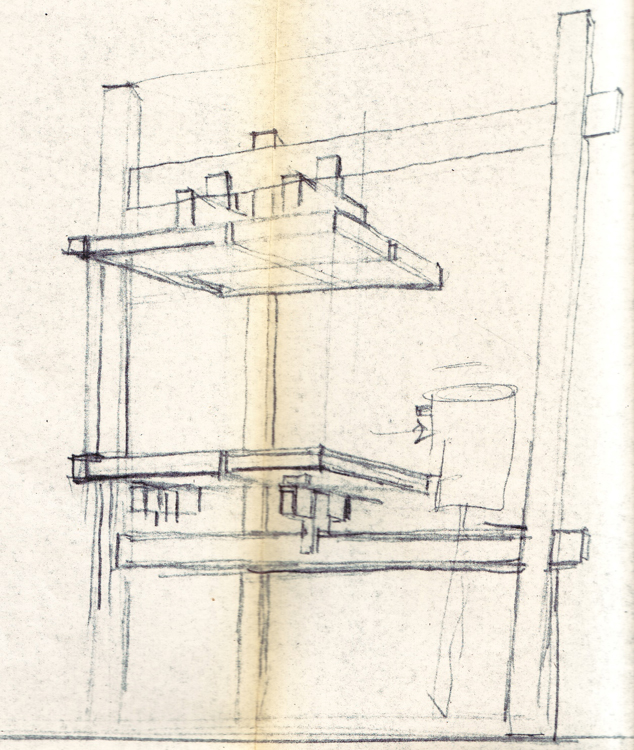
This sketch shows each of the floors being broken up into four independent elements supported by the concrete beam below and suspended off the concrete frame above.
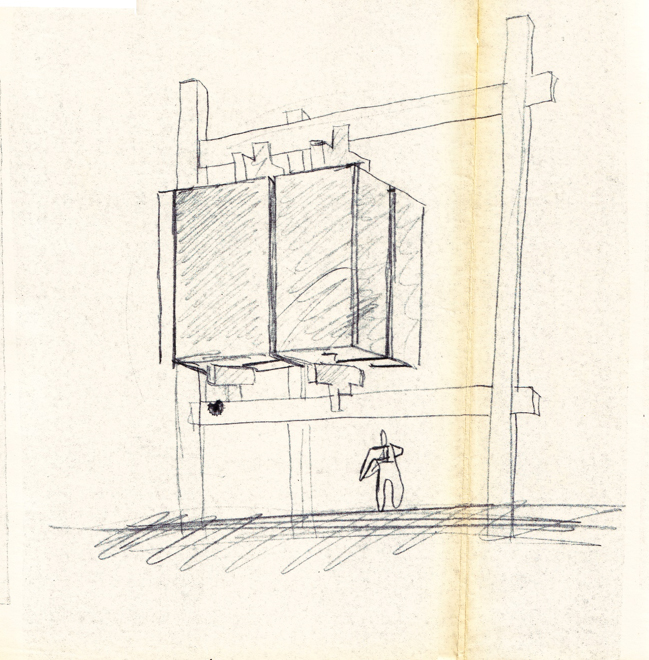
Giusepe envisioned the house as a pure concrete box with only slits leatting in light. After much discussion between himself, Uga and Raynaldo this idea was not followed.

This sketch explored the idea of seperating all the walls, floors and ceilnigs with glass strips echoing Zevis Seven Principles for Architecture.

A further ideas was pursued to introduce circular openings filled with spherical windows.

In the end, the family decided on a modular wall structure made of pre-case hollow elements. This could be lifted into position and then they could decide where to place solid elements and where to leave to window openings.

Sketch exploring ideas of coloured glass elements instead of the cuboid concrete blocks.
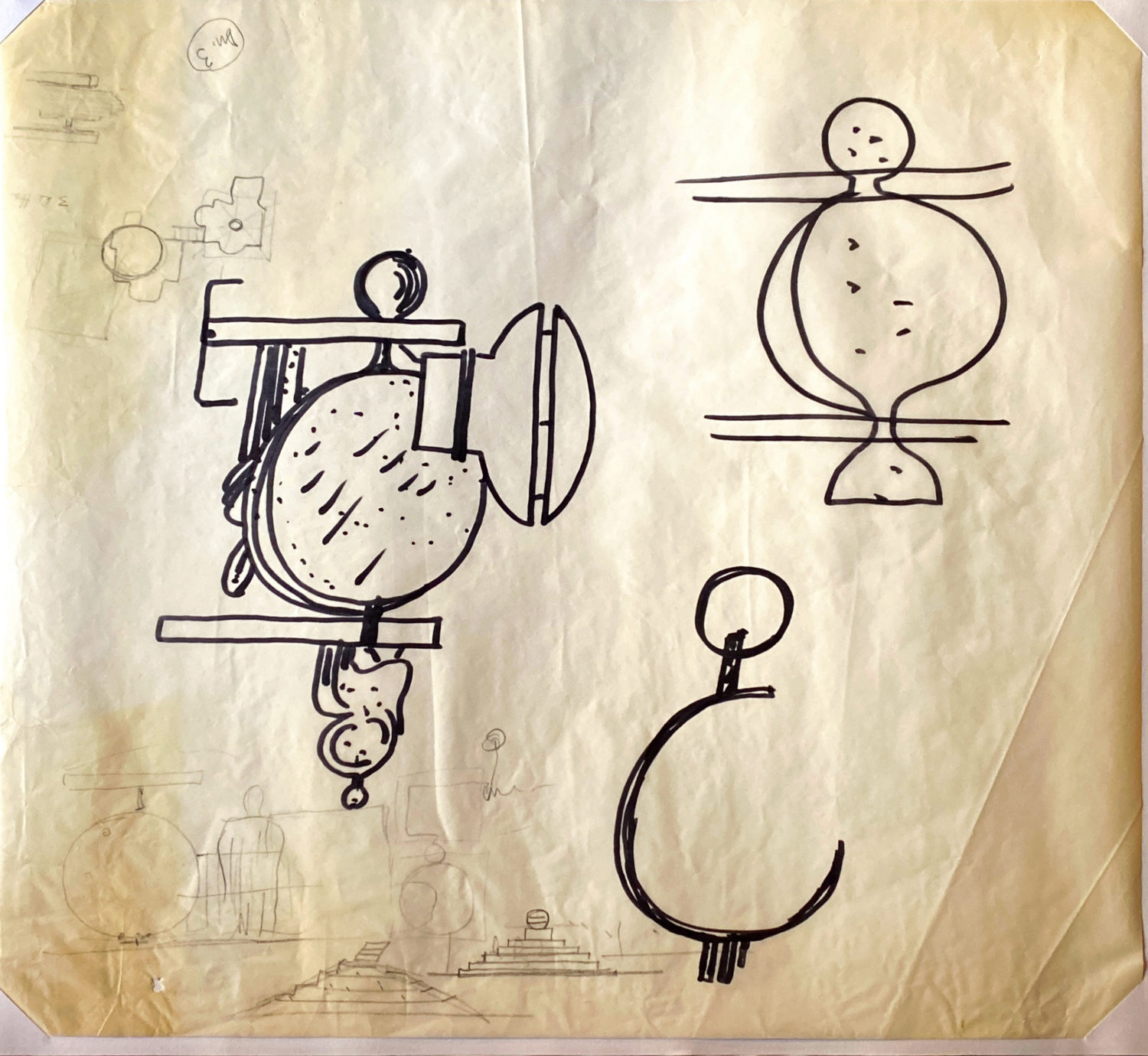
Sketch testing ideas of circular and globe-shaped elements used to create the spaces in the main structure of the Casa.
(All sketches are copyright by the Perugini family archive.)
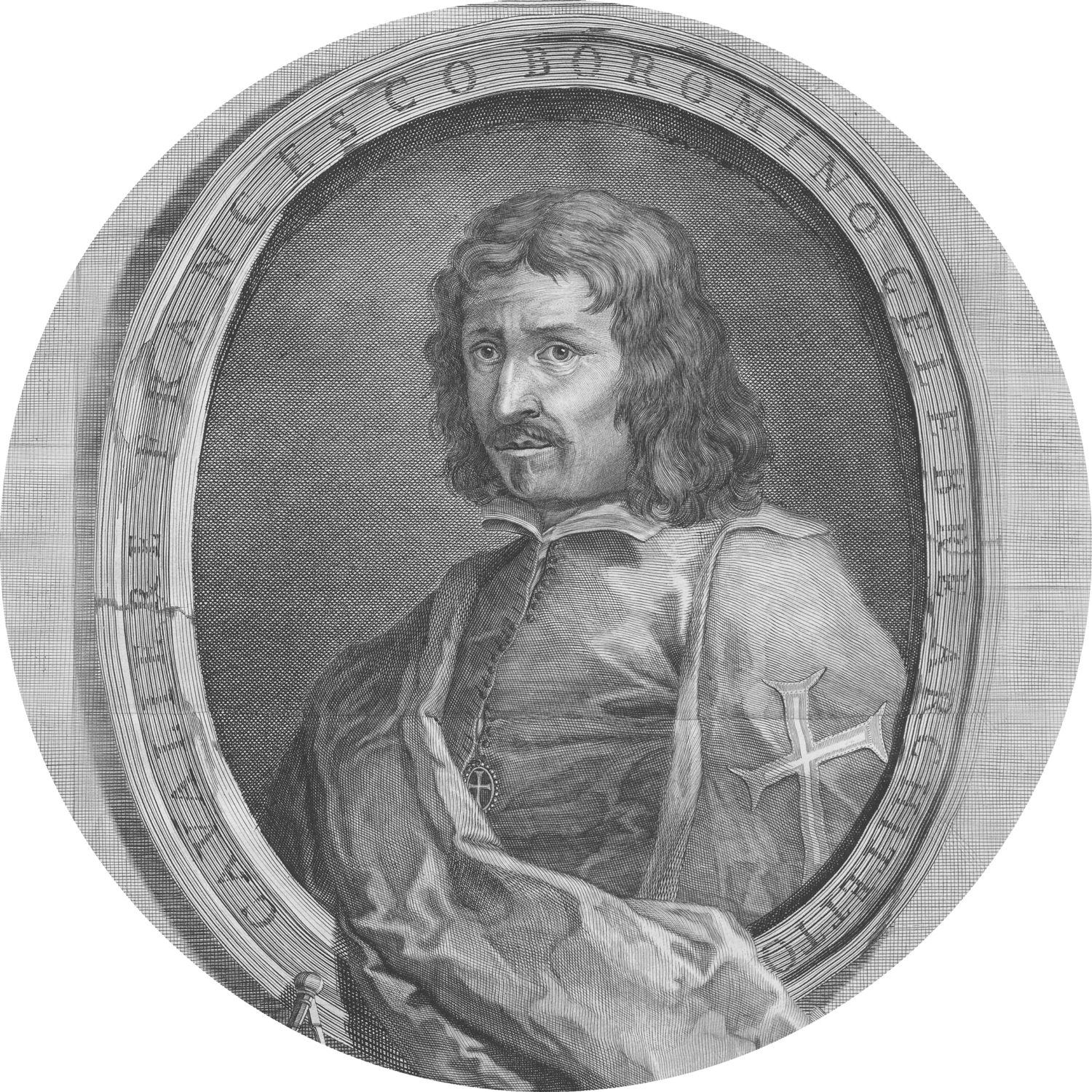
The Italian architect Francesco Borromini (1599-1667) was together with his contemporaries Gian Bernini and Pietro da Cortona one of the leading figures in the Baroque architecture in Rome.
Borromini is best known for his first solo commission, San Carlo alle Quattro Fontane, a small church complex in Rome.

Domo of San Carlo alle Quattro Fontane
The introduction to Opus architectonicum, written by his patron Virgilio Spada explains “…and I certainly would not have joined this profession with the intention of being a mere copyist, even though I know that the invention of new things does not reap the fruits of the labour, if not late, given that the same Michelangelo did not receive it when in reforming the architecture of the great Basilica of St Peter he was attacked for new forms and ornamentations…”.
Borromini didn’t just wanted to copy ancient orders and spatial concepts. He saw himself as an architect who ignored all the classical rules, as a creative person who ignored them in favour of inventing a new architectural language. The rulebook of the time, Vituvius ten books De architectura was still seen as a rulebook, a guide to creating great architectures.
For Borromini knowing Virtusius wasn’t limiting corset, it was rather an handbook to chose motives and patterns but then using them in a novel way to respond to a different set of restrictions. In the case of San Carlo the site was a difficult corner condition into which Borromini had ot invent a different spatial arrangement to create a sense of space. The walls, an undulating flowing set of concave and convex curves are structures using classical columns. Follwoing a plan that is played out in a series of circles the space is topped with a oval dome.
Each of the elements of the design is proportinally linked to the whole strucutre.
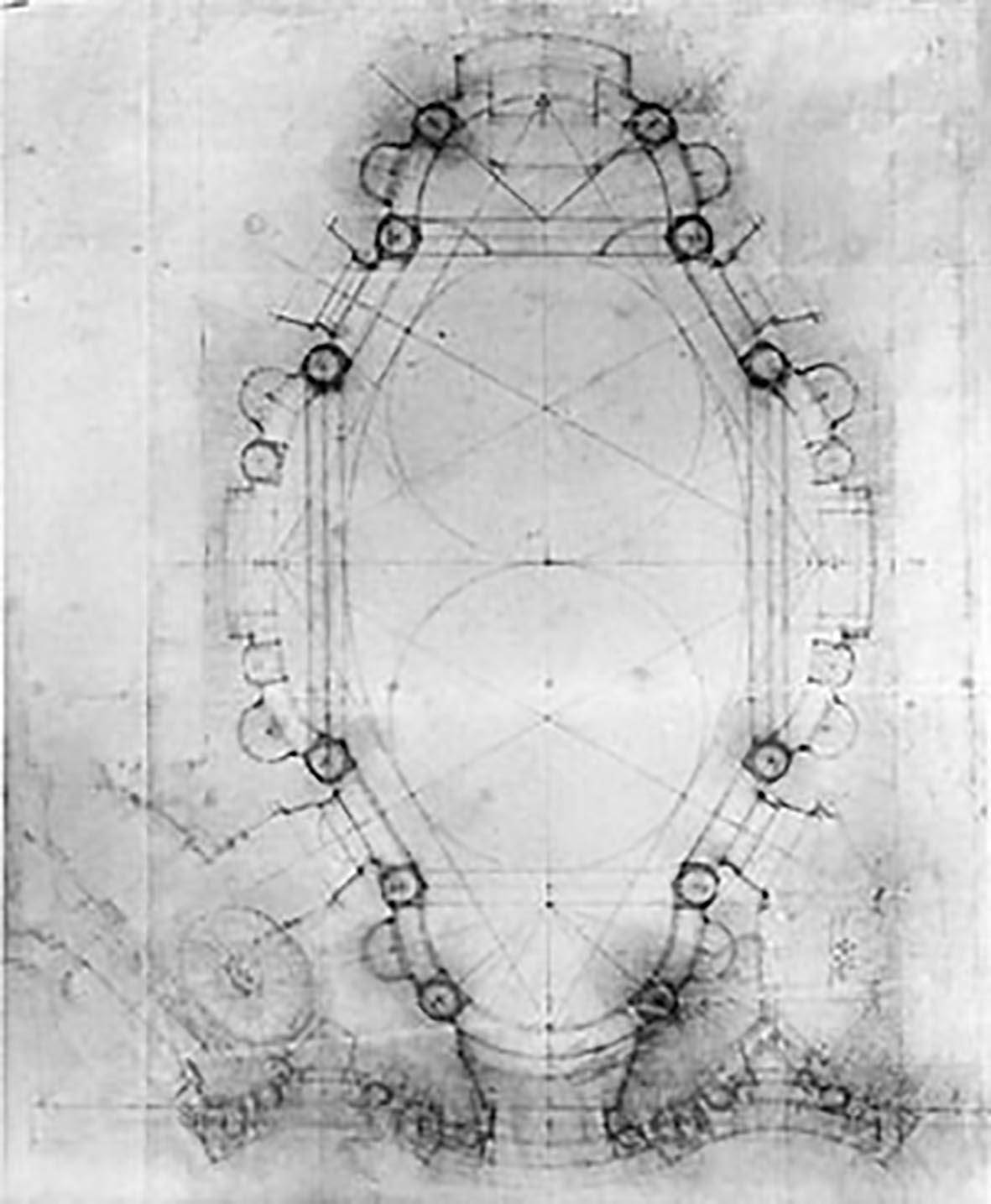
Plan study of San Carlo by Borromini
The research of Giuseppe Perugini led to a series of publications looking at the architecture and especially the geometry in Borromini’s work. He published a book on the history and the geometrical principles of his church Santa Maria dei Sette Dolori.
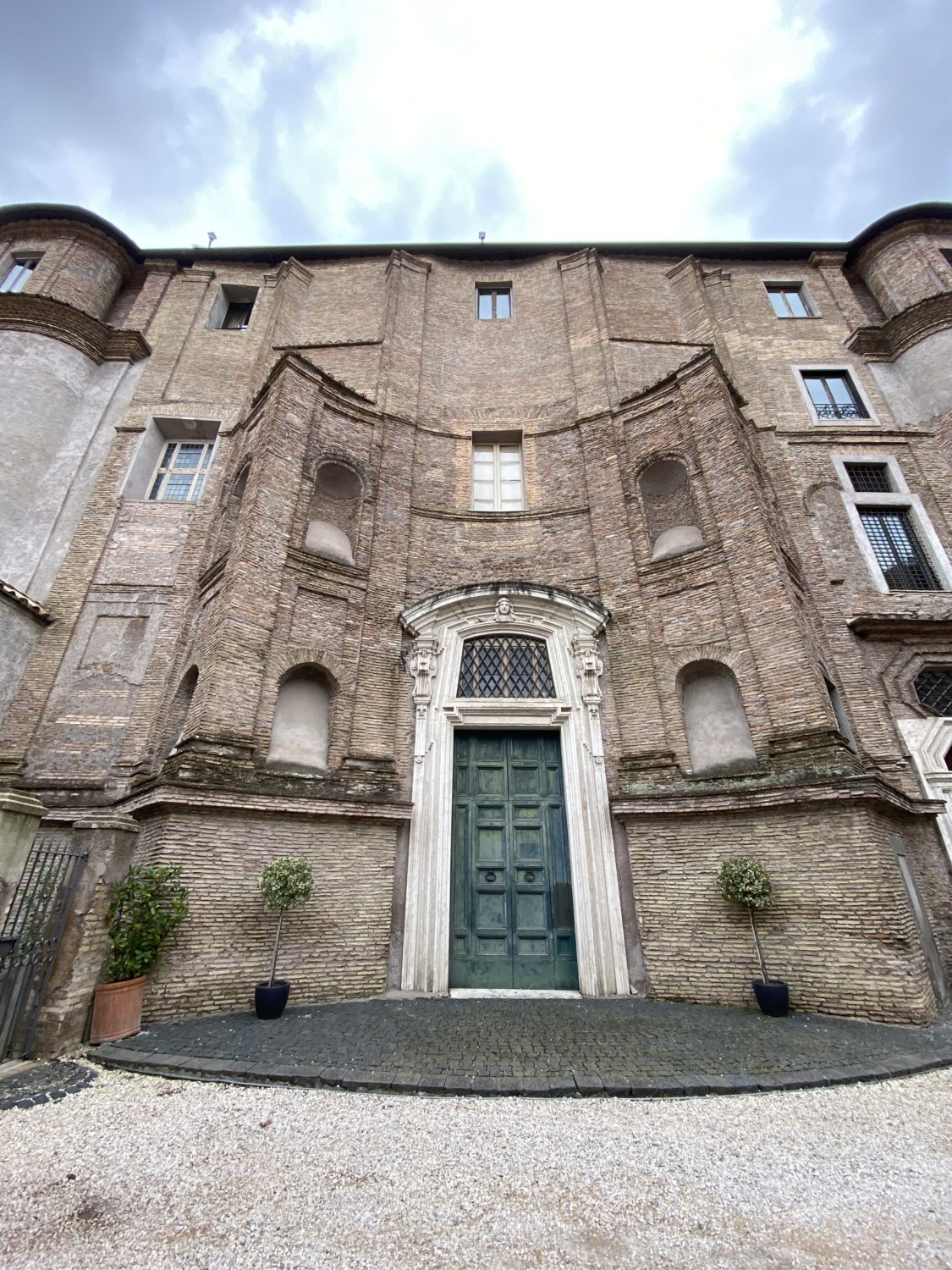
Elevation of Santa Maria dei Sette Dolori.
Church Santa Maria dei Sette Dolori
San Carlo alle Quattro Fontane
Vitruvius Ten Books on Architecture
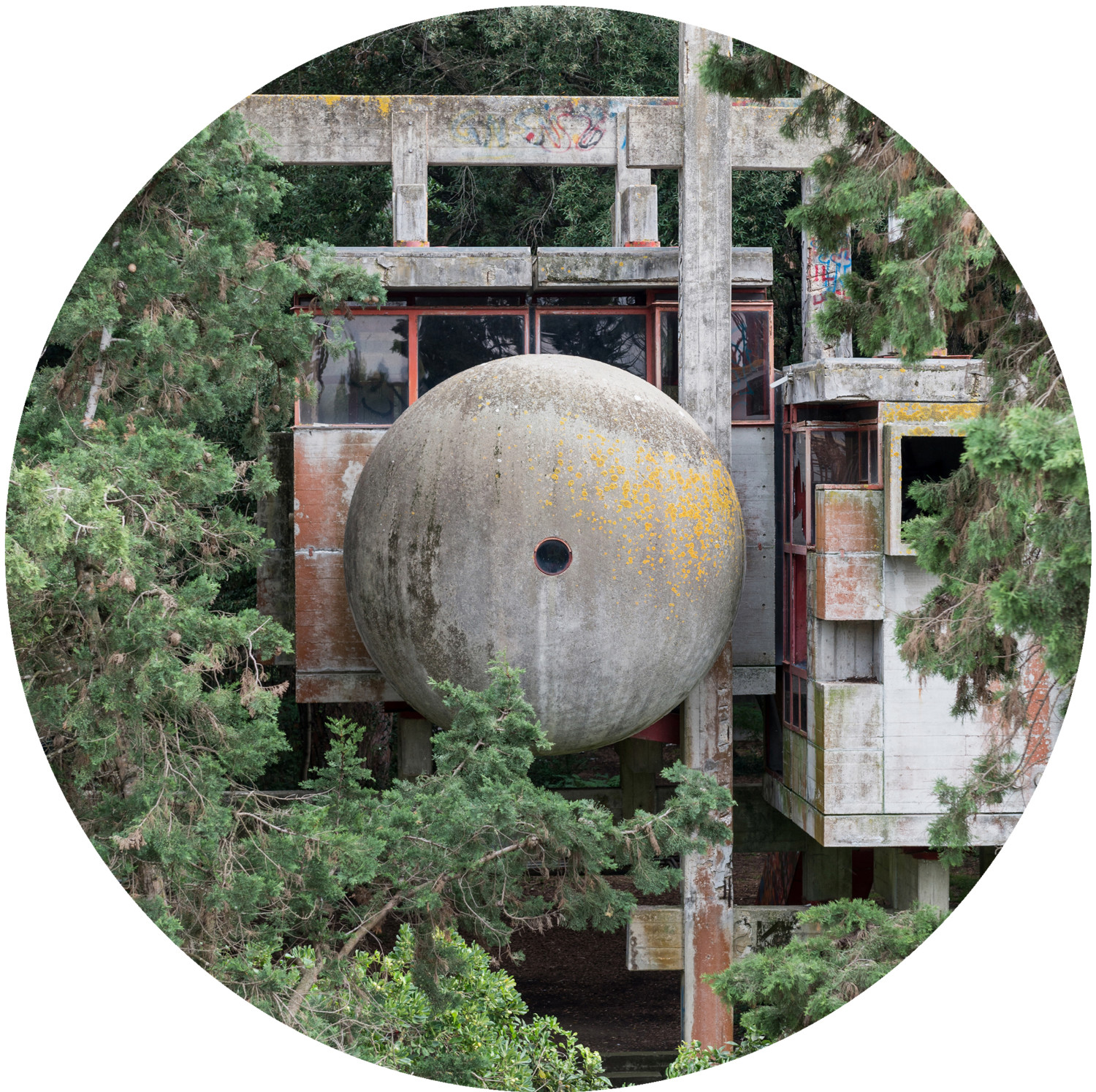
Very few images of the construction period have survived. As the structure was never completed—fulfilling the ambition to be unfinished and endless—it has never been formally photographically documented.
As part of our documentation we have extensively documented the architecture in its current fragile state to document the building, its setting and the actual structural damage caused by years of vandalism. Being in such a fragile state with some of the main structural members of the superstructure now corroded, there is a real danger of a catastrophic loss of the building in the near future.
In July 2018 we commissioned the photographer Andy Tye to document the building in its current state.
The set of photos attempted to show a different side of the building, seen through the eye of a professional photographer. Carefully crafted they show not only the spaces but they frame as well the deterioration of the structure and fragility of the elements.
This photographic record forms the basis of an invaluable document of the building.
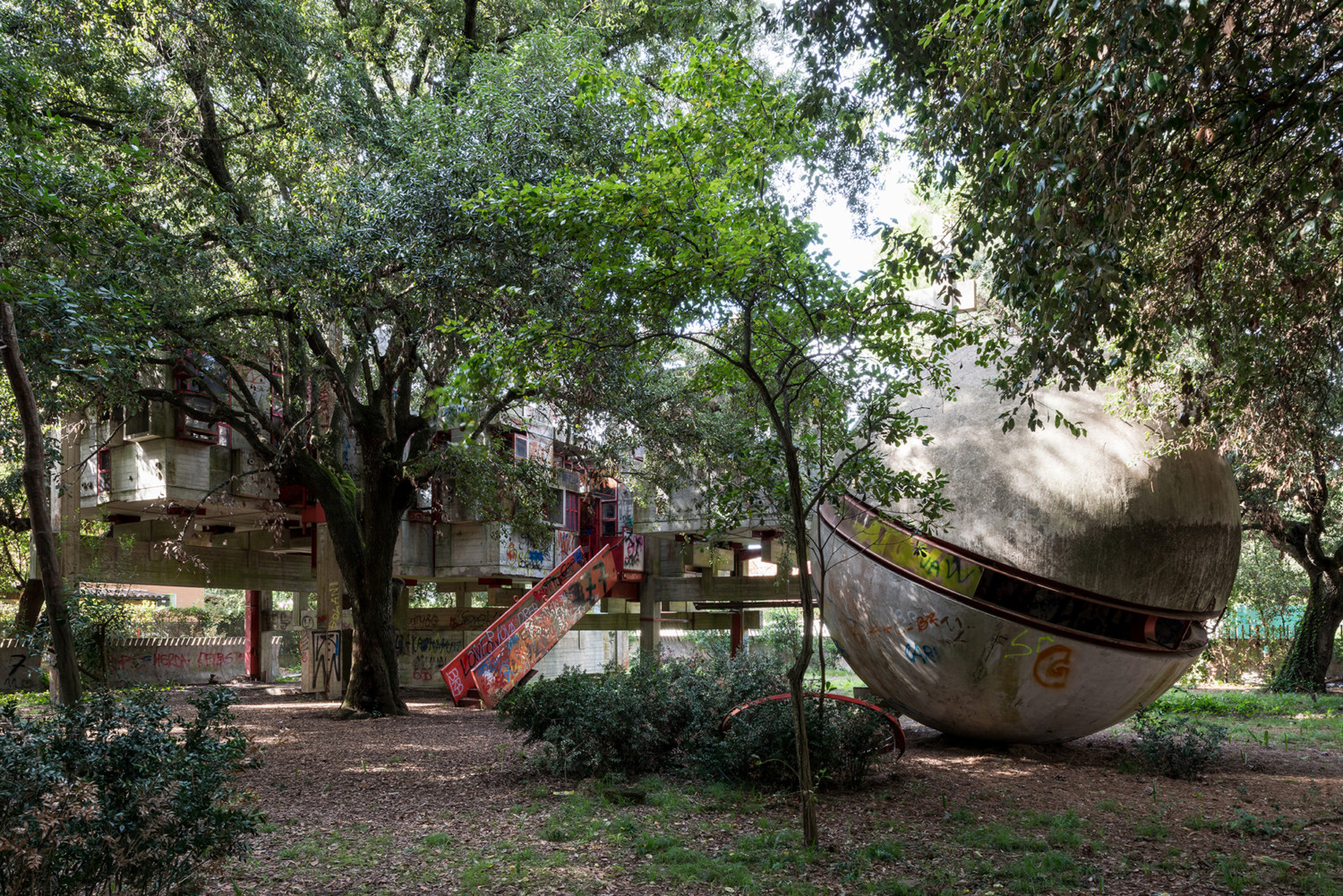
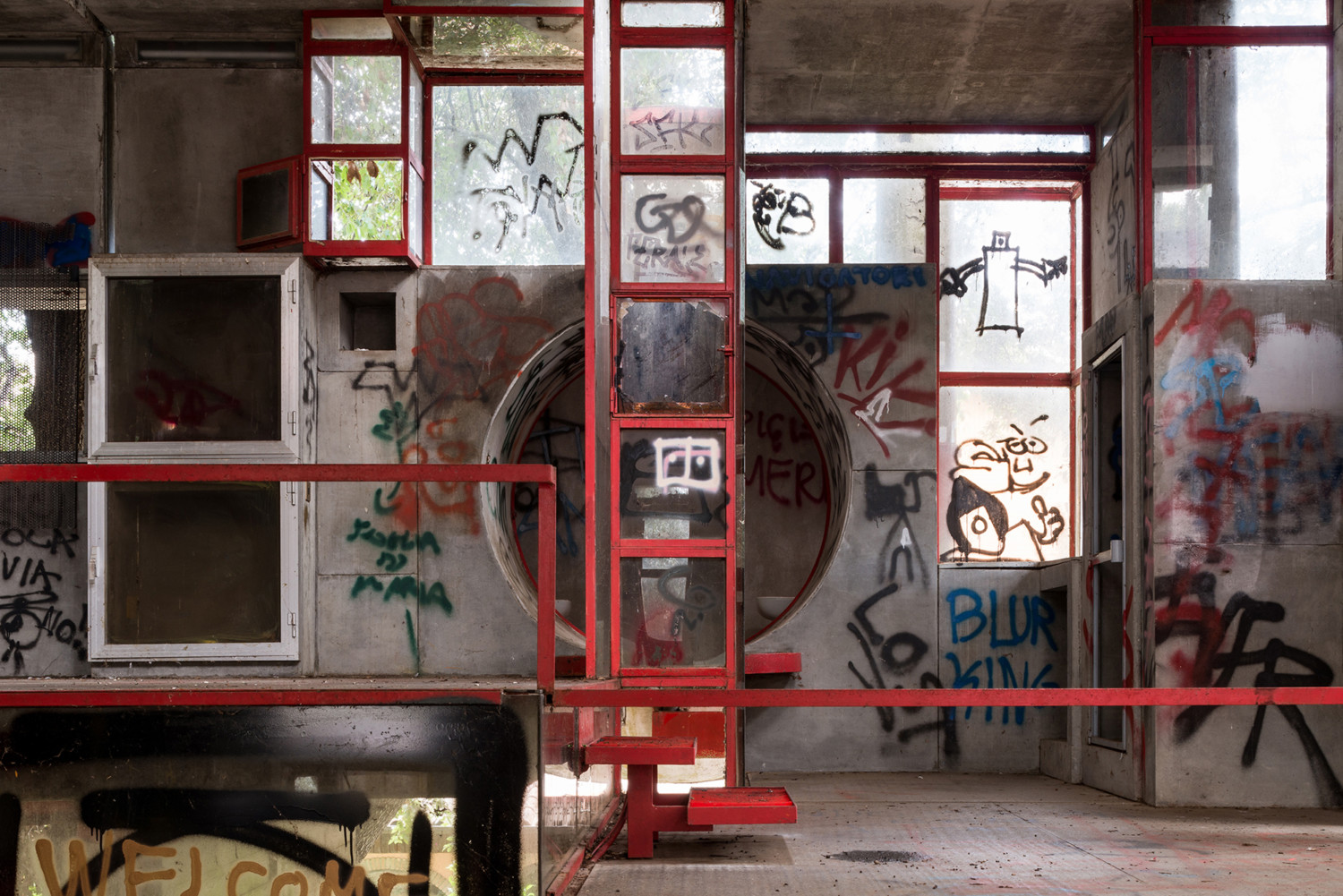


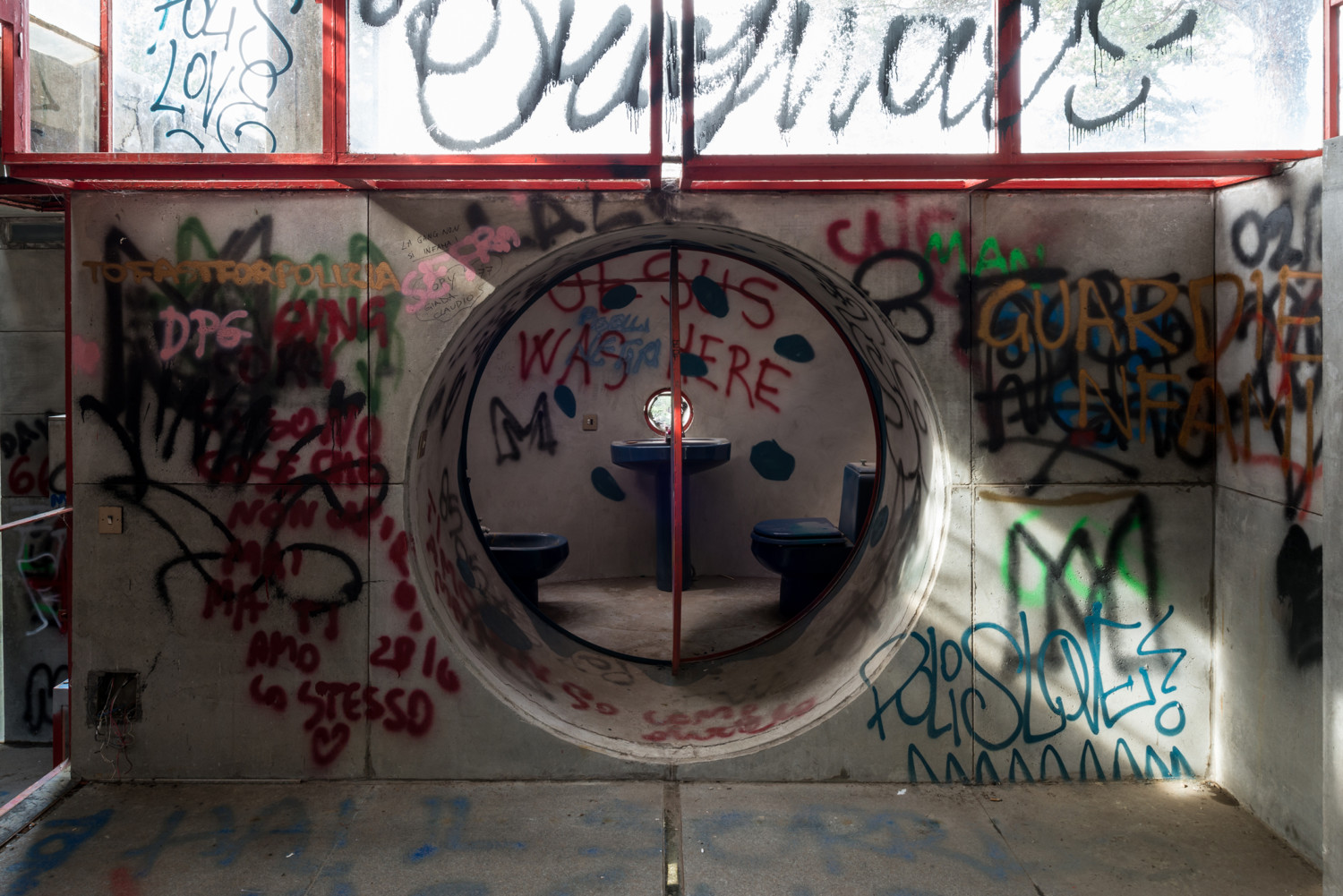
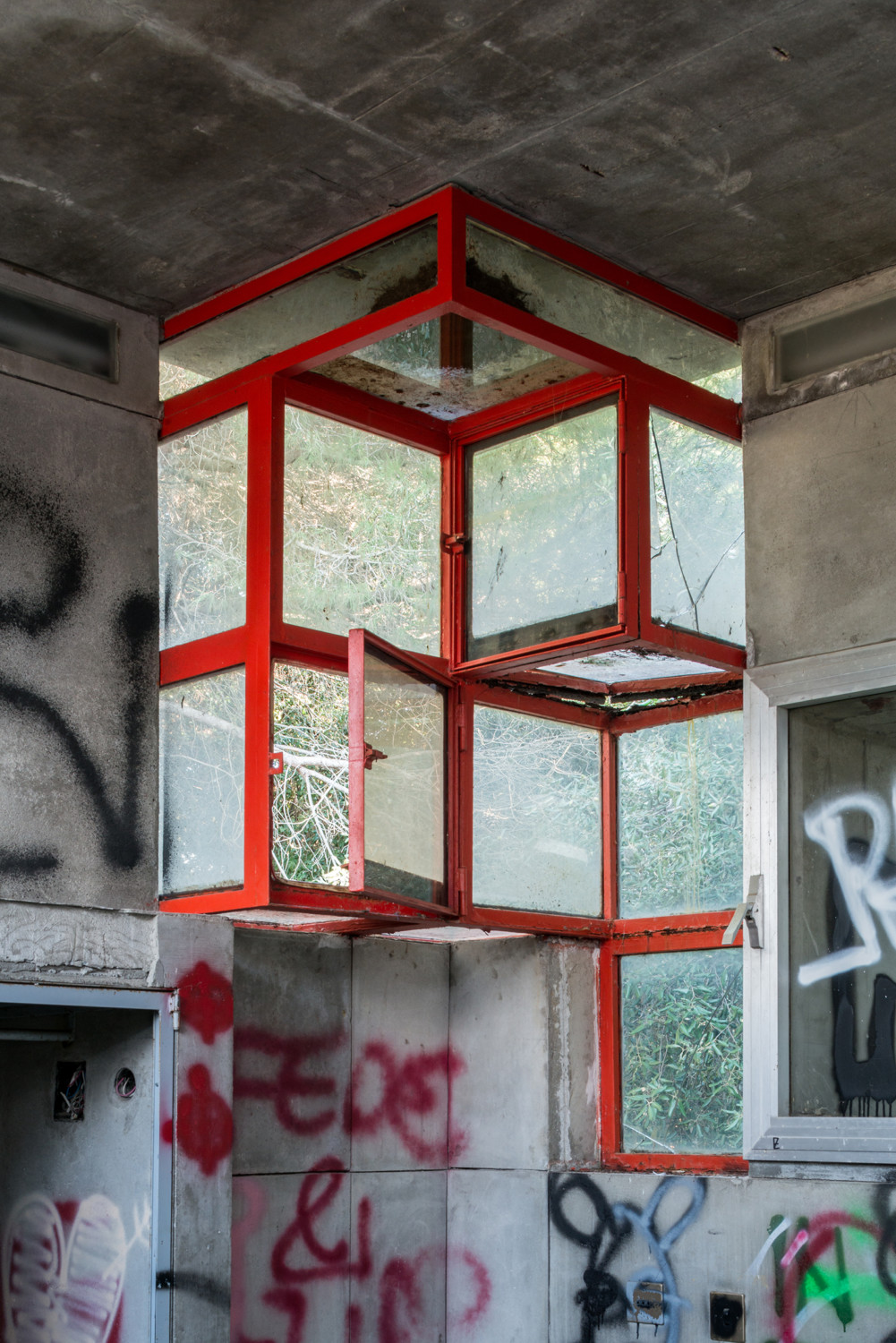
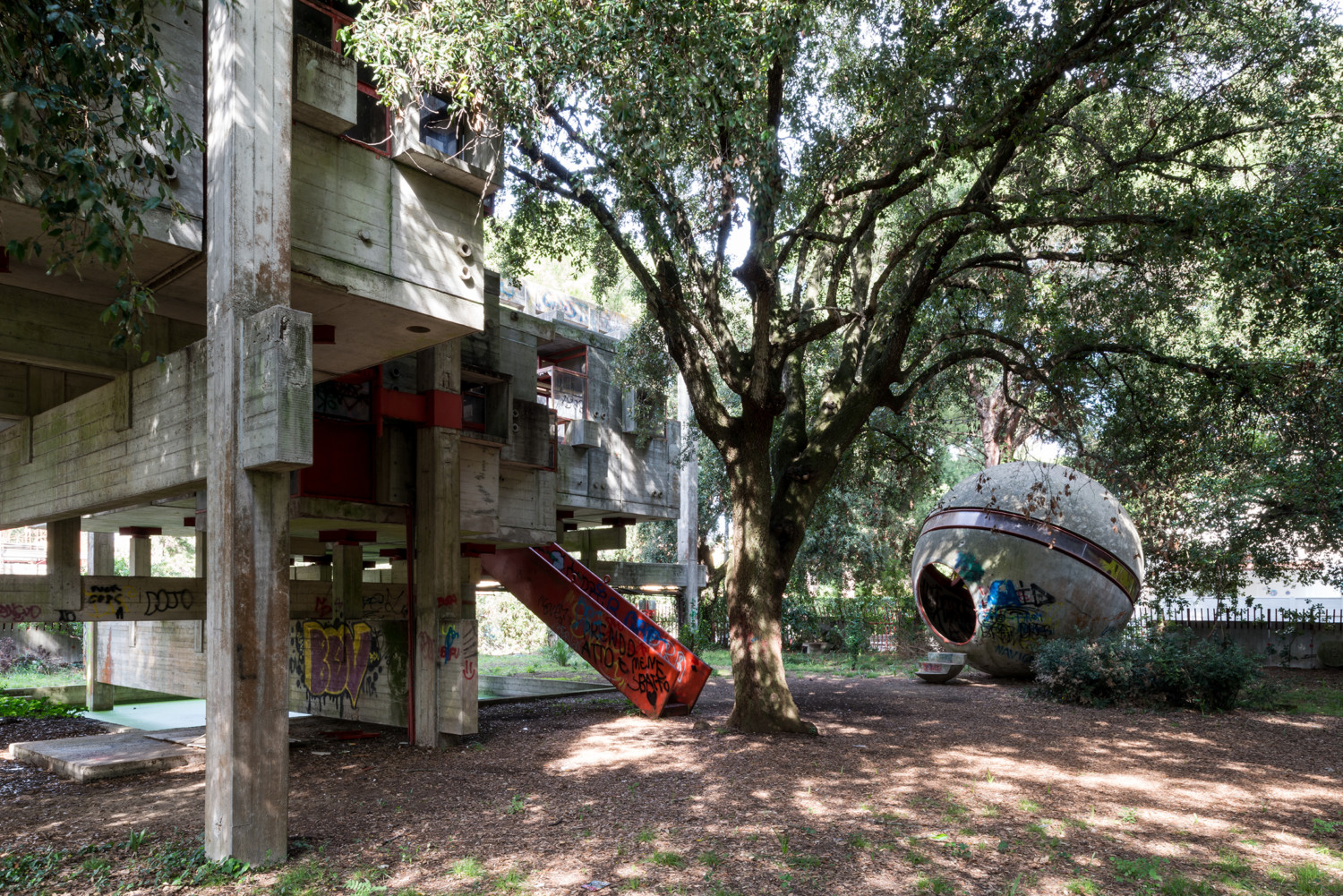

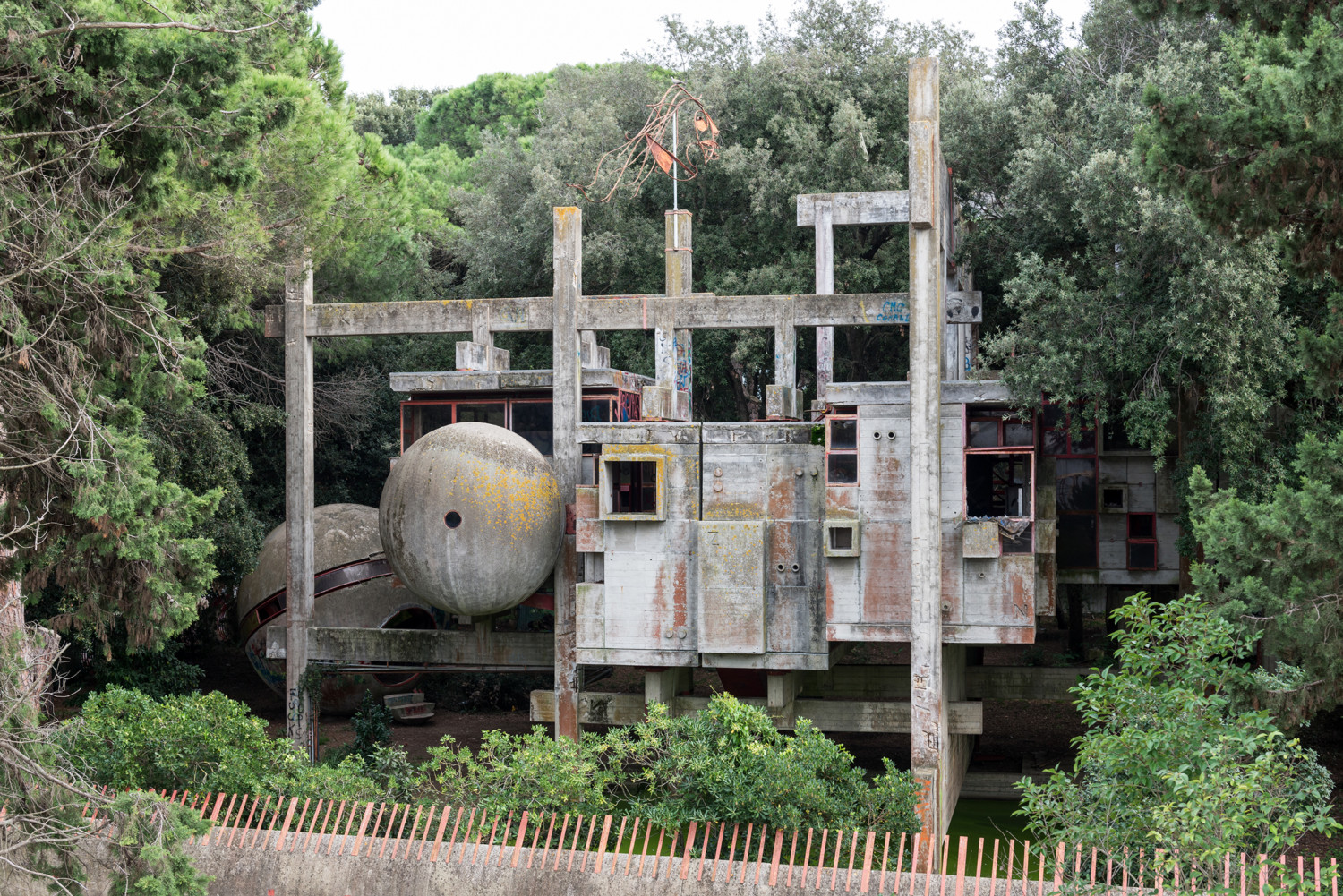
more here: FrenchandTye
All photos are:
©Patrick Weber and ©Andy Tye, www.frenchandtye.com
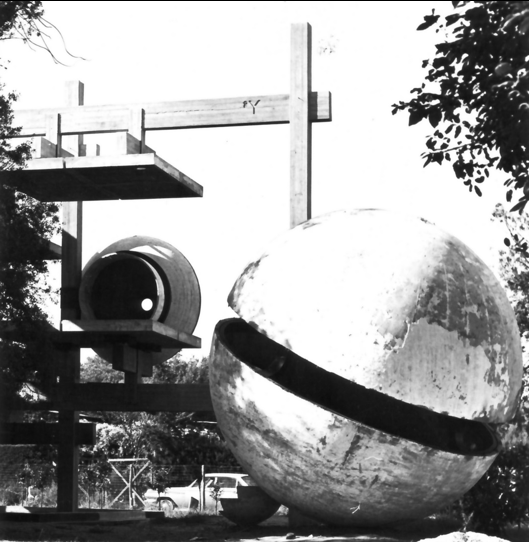
The Sphere next to the main house represents an entirely different concept of living. A micro house contained within a 5m diameter concrete shell.
To create the sphere the Perugini used the same method they tested for the creation of the bathroom shells. The shape of the half-sphere was hollowed out in the sand next to the site. A wooden scribe was used to even the sides and using a plaster the shape was defined.
Then using a second scribe slightly smaller the concrete was spread evenly around the mould. A mesh reinforcement embedded in the cast.
The centre of the scribe can still be seen in the azimuth of the spehere.
After completion, the whole shell was extracted with a pulley system and placed on site.
The second half was then cast into the mould. This second half-shell was mounted on top of a separating ring structure onto the first shell. This ring now contains a perspex transparent strip.
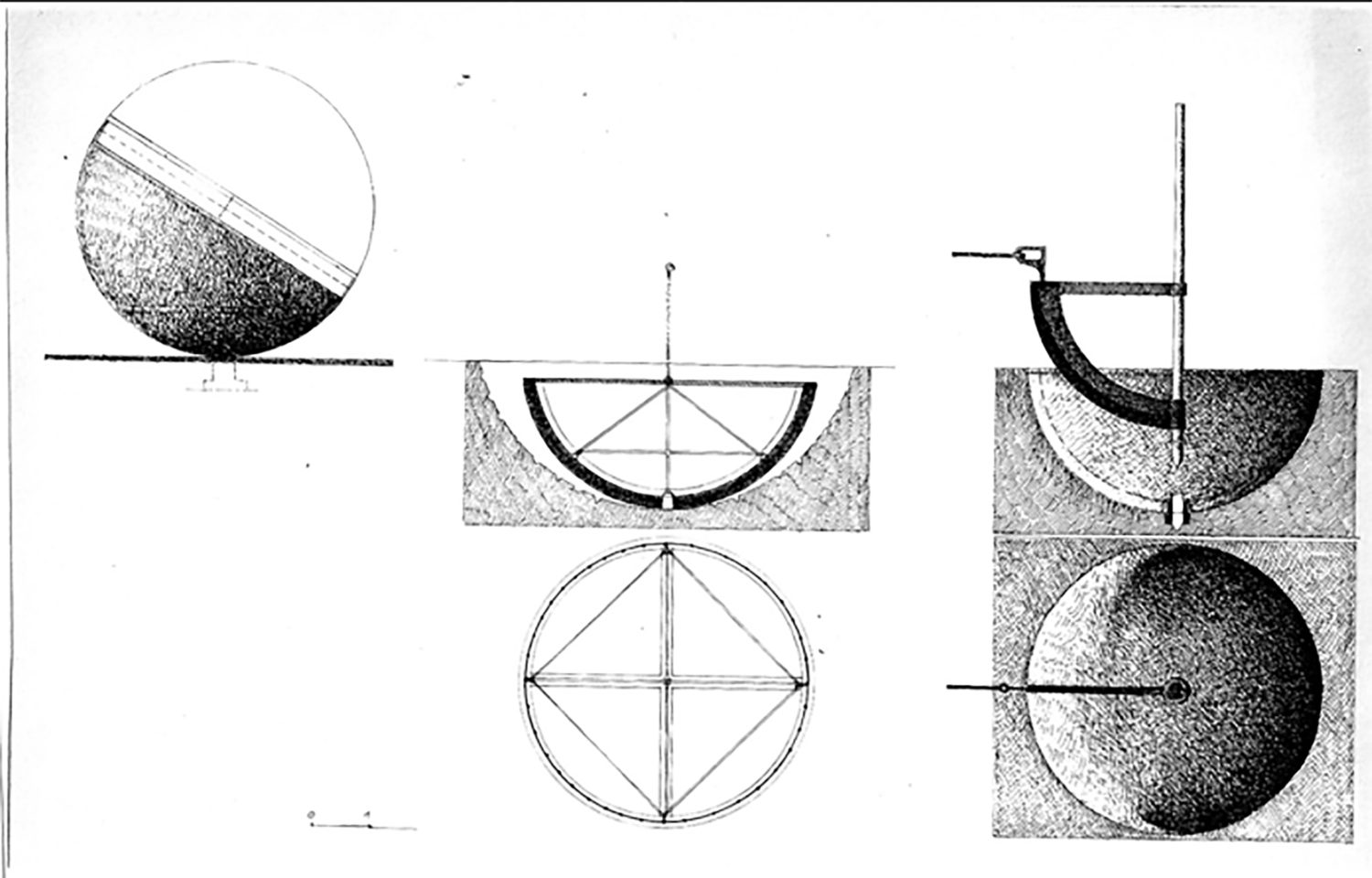
Sketch by Perugini showing how the half spheres were cast into the ground.
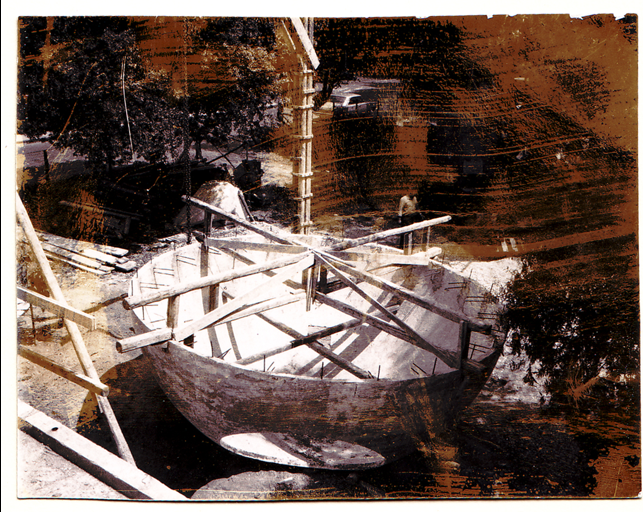
The first bottom shell after it has been extracted from the mould. The wooden support stabilised the fragile concrete shell during the extraction and mounting process.
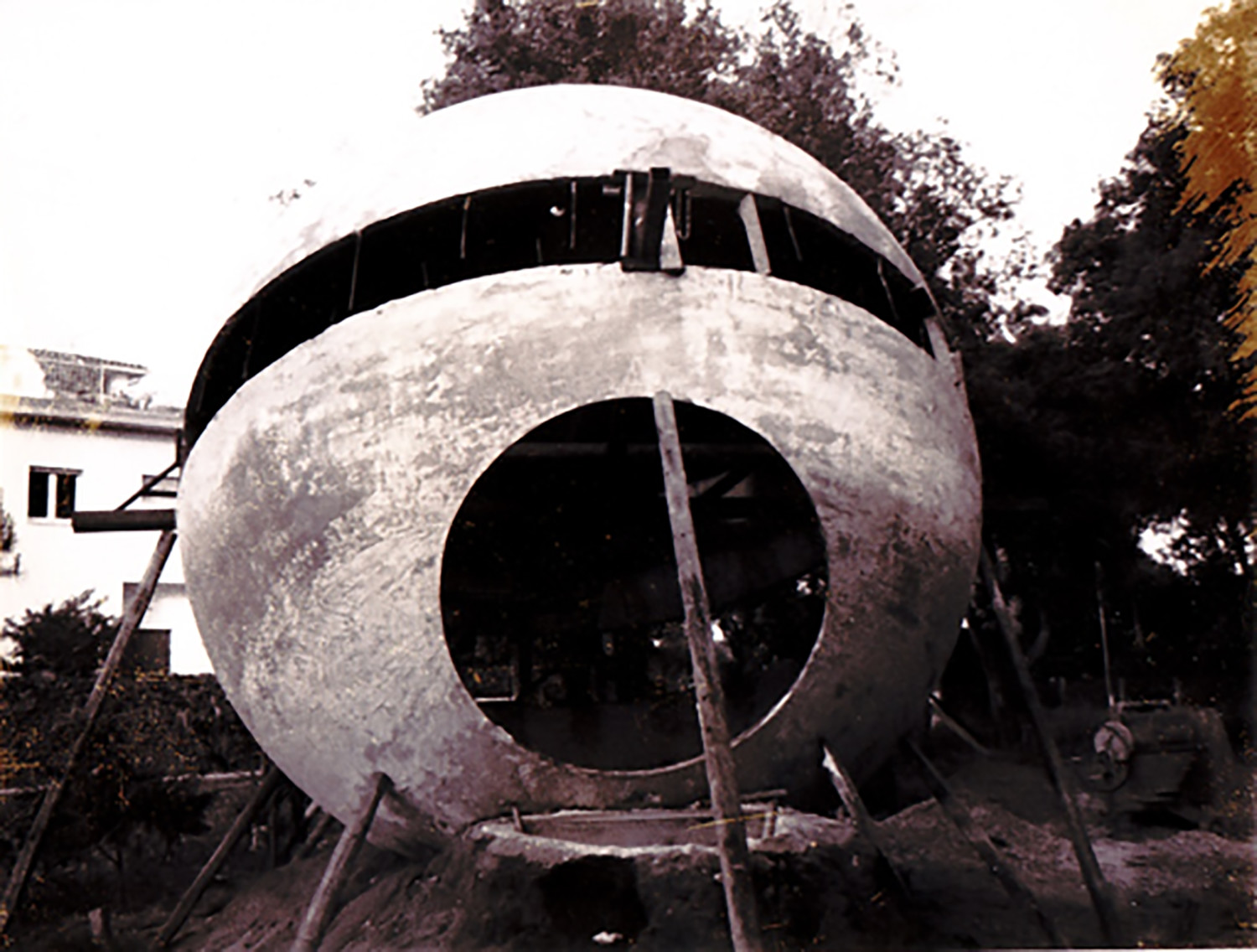
The top shell placed on the bottom half shell.
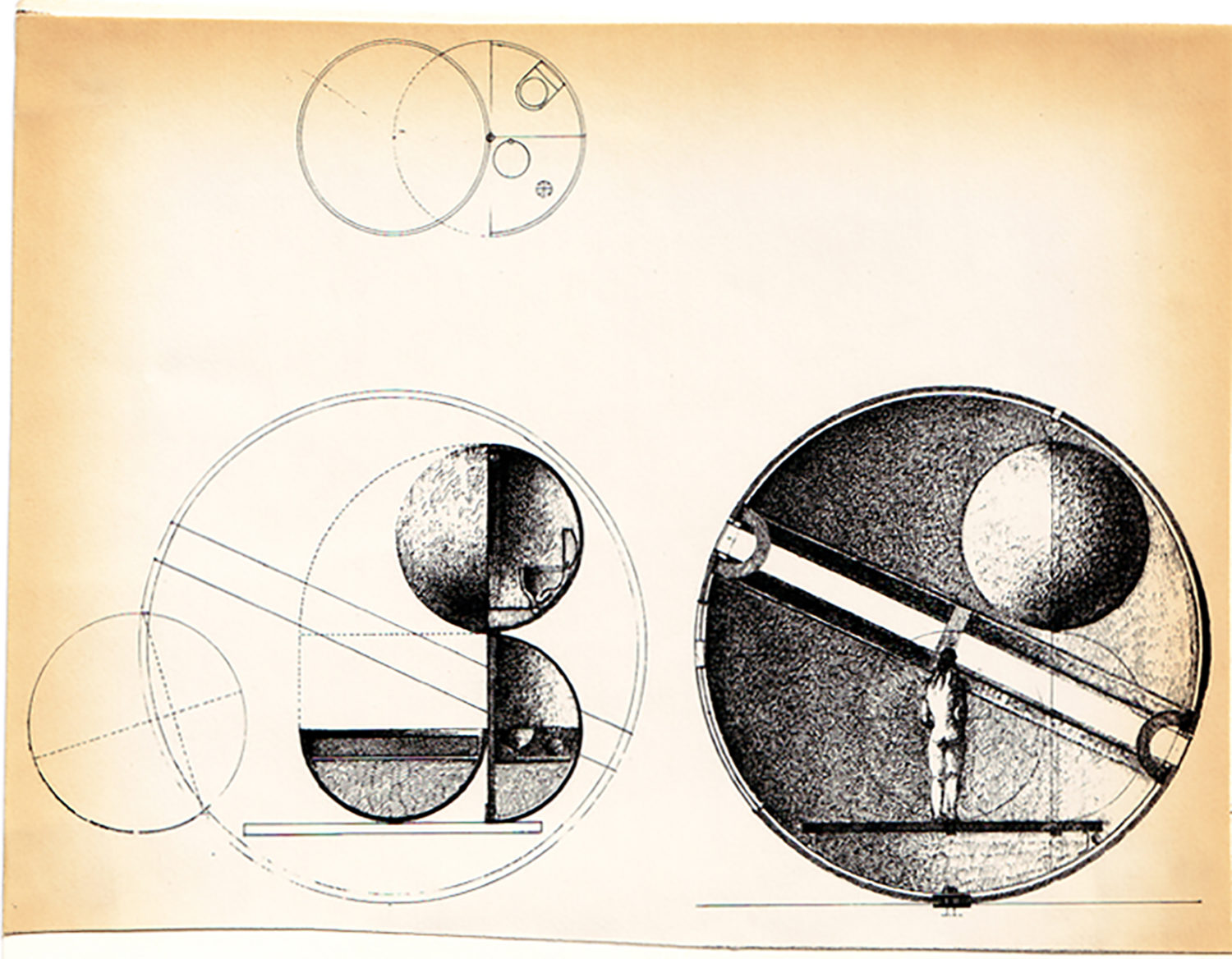
This drawing shows how the Peruginis planned to fit out the sphere. A suspended globe contained the bathroom and the bottom globe could be unfolded to form the bed.
(Al images copyright by the Perugini family archive. )
In hos book Casa Albero, Giuseppe Perugini writes this about the construction and the functions of the Sphere:
THE CONSTRUCTION OF THE BALL AND THE SERVICES
The inspiring principle of their construction is the system of potters. In fact, the first step is to carry out an excavation aimed at obtaining the space to make the initial mind the guiding form, which is also facilitated here by the sandy soil. A vertical pole is then fixed in the center with a welded iron sheet suitably shaped so that, by rotation, the desired shape can be obtained. After a first rotation of the shaped rod, which regulates the excavation, always rotating, plaster is thrown which, depositing itself on the walls, thickens and creates the real counter form. Then we proceed with the installation of a steel reinforcement made separately and fix a galvanized iron circle on the upper part of the resulting form. At this point the initial foil is replaced with one of reduced dimensions, determined by the thickness that is intended to be given to the element to be made and then the concrete is cast by still rotating the rod on itself until the cement has purchased a certain consistency. After the time necessary for the setting of the cement, it is necessary to dig around the counter form that is pining, thus releasing a perfectly finished object which is then removed with the crane and moved for laying. It is a substantially very simple system which, as in this case and if the conditions exist, it can also be carried out on site. The two half-caps that make up the Ball were also made in the same way but with further precautions. In fact, after having made the two parts that they constitute it, a particular COSTITU support structure was made up of a series of “U” beams – suitably pie gates – and large C in galvanized metal, while, as we have said, the choice to tilt the glass junction point made it possible to avoid a sense of static nature that a horizontal solution would have generated. The structure of the house and the ball under construction Scheme of the construction technique of the services and the ball.
Given the purposes that these short notes propose and the small space available, I think I will not have to go any further by recalling here the purposes and the “old-fashioned” method of the treaties whose purpose was to allow the dissemination of ideas, elements and their explanation. I understand perfectly well that Casa Albero can appear at first sight as an object in its own way eccentric, like the dream of a visionary architect, but I hope that whoever reads these lines will recognize its true meaning, its true role, which it is that of “mo of the experimental”, finding in the compositional choices made the concretization of all those values, even symbolic or unconscious, which have always been part of the very idea of Architecture.”
Giuseppe Perugini, Casa Albero
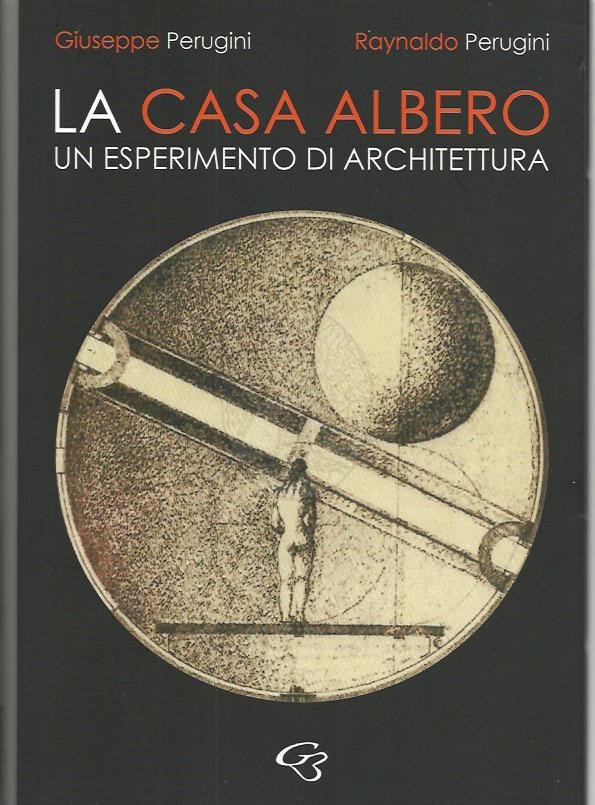
2018 Raynaldo Perugini published this small book collecting a series of texts and essays by his father to explain some of the ideas behind the Casa Sperimentale. It is avaialble on AMAZON Italy.
We translated parts of the text on this Website.
